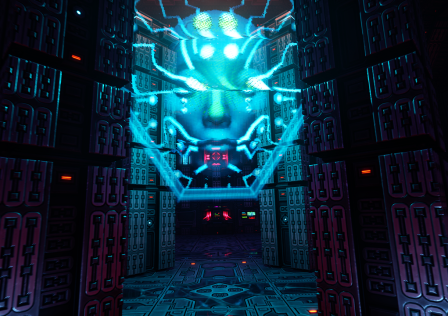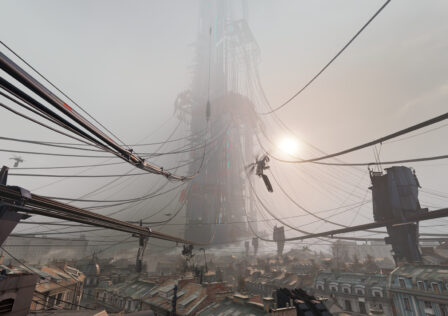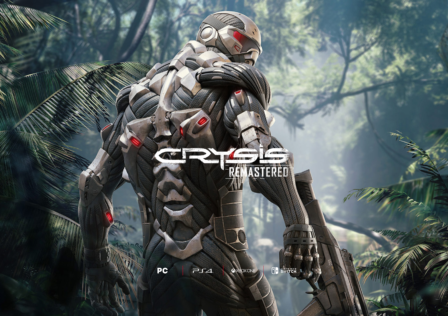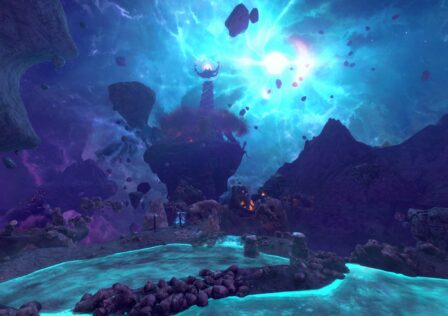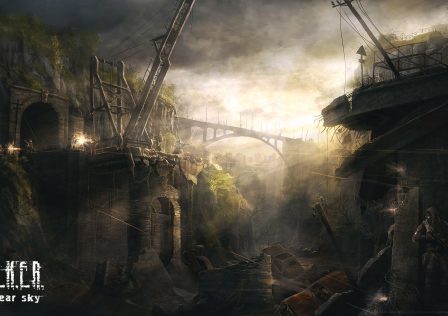With the upcoming release of the System Shock remake (be sure to play the demo), we decided to finally review Arkane Studios’ Prey released in 2017, as it is a System Shock series spiritual successor. We previously reviewed the original Prey from Human Head Studios. I suppose that makes Arkane’s game a reboot, but the two games could hardly be any more different.
The original Prey was a fast paced, action packed, bizarre but awesome Sci-Fi FPS on id Tech 4 engine. It was a technologically groundbreaking unique take on the fast paced FPS genre thanks to its vertical, upside down, sideways, physics defying yet awesome gameplay full of alien technology that you interact with.
On the other hand, Arkane’s Prey is more like a spiritual successor to the System Shock games, like the BioShock games but much better with less dumbing down. At the same time, Arkane is sort of going back to their roots with this game, as it’s more like their very first video game ever, Arx Fatalis. Really the only similarities between the two Prey games are:
- Both are Sci-Fi FPS games
- The first weapon you get is a wrench in both games (but this is also the first weapon in System Shock 2, the game’s real immediate predecessor)
That’s it, no story similarities and no real concrete gameplay similarities. Arkane’s Prey is a slow paced, methodical survival horror FPS game focused on exploration and world interaction. Hence why I personally refer to it as “Preyshock” (someone please come up with a better name in the comments, the original working title “Typhon” was certainly better). While the “Prey” name is a literal fit for this game, it’s deceptive for anyone expecting something like Prey.
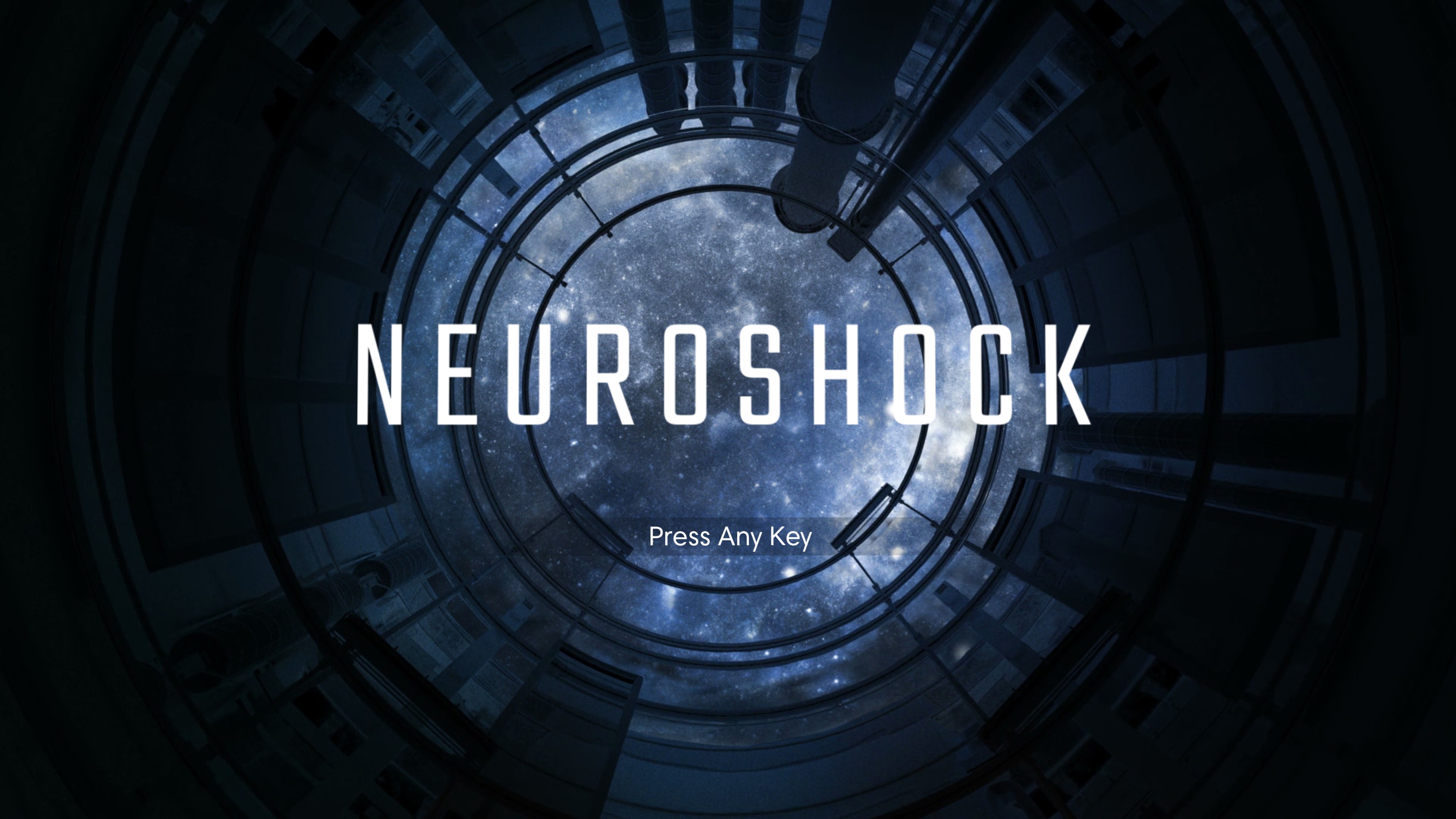
A more appropriate name, added by a mod which is linked below.
What does it have in common with the Shock games (namely System Shock 2), you ask? Here’s a list:
- System Shock 2 and Arkane’s Prey are Sci-Fi survival horror FPS games, following the “immersive sim” design ethos which emphasizes emergent gameplay – there are countless ways to interact with the world that spawns new gameplay mechanics, such as skill/ability based requirements to access parts of the levels, recycling, usable computers, usable door locks, usable power switches, etc. The pacing is very similar – slow and methodical, dangerous and intense.
- In all the Shock games you explore an oppressive, seemingly abandoned environment and must figure out what happened
- Narrative design primarily revolves around audio logs left in the environment, along with thorough environmental storytelling
- RPG inspired gameplay leading to multiple playstyles much like System Shock 2 albeit without quite as much depth
- Like the System Shock games, it emphasizes exploration and environmental interaction with no forced hand holding and almost unlimited backtracking (BioShock is much weaker in this regard, also weaker in general)
And more specific references to System Shock and other games include:
- Wrench being the starting weapon is a System Shock 2 reference
- “Looking Glass” technology is a reference to Looking Glass Studios, the creators of the System Shock series
- Grav shafts are straight out of System Shock, although not implemented as well as in SS2 due to the complete lack of control within them
- Psi hypos are straight out of System Shock
- Neuromods are reminiscent of a similar item in Bioshock
- Corrupt operators literally say “system shock”
- One character talks about the Typhons infecting people with “black eggs” which is a SS2 reference as black eggs are an important quest-related entity in the game
- The tabletop RPG “fatal fortress” is a reference to Arkane’s first game, Arx Fatalis, which literally translates from Latin into fatal fortress. Also, both Arkane’s Prey and Arx Fatalis are spiritual successors to Looking Glass Studios games – Prey is a System Shock successor and Arx Fatalis is an Ultima Underworld successor.
- There’s a character in the game called Commander Dahl – possibly a reference to Dhall from Planescape: Torment, one of the first characters you meet in the game (whereas Dahl is one of the last in Prey). Chris Avellone was a writer for both games.
While the System Shock games (especially the second one) pursue an Alien inspired claustrophobic space horror setting, Arkane’s Prey goes another route. It is a much larger game, much larger than the BioShocks even, taking slight cues from Dishonored’s level design with the amount of stealth capability and verticality. The increased size comes with more focus on storytelling; exploring Talos I research station and discovering how the crew members lived their lives and what befell them. The change of scale has its pros and cons, but more on that later.
Prey is also 2x-3x as long as System Shock 2 or BioShock, depending on how thoroughly you explore Prey’s world. My first playthrough clocked in at 28 hours, versus just under 12 hours in System Shock 2. However, a very thorough playthrough of Prey can take up to 40 hours, for a player who wants to become as overpowered as possible and find all secrets.
So that’s what Arkane’s Prey is. Now let’s see how good or bad it is. But first, I must list some mod recommendations. Prey is not a very moddable game, but there’s no reason not to use the mods below:
- Prey for Death 2 – The definitive mod for Arkane’s Prey! It transforms it into the proper survival horror game it tries but fails to be, and compensates for its weaknesses with features like limited saving, new weapons, new enemy variants, some randomized elements, and more. This review wasn’t written with this mod which totally transforms the game. This review was does cover the mods below as well as Prey Core Balance Mod and Horror Typhons, though I’ve played without them so you’ll see me mention before/after comparisons with these mods. But I do recommend Prey for Death 2 for newcomers since the original game is just deficient and inadequate in comparison. Play on EASY mode with all survival options enabled. That’s right, easy mode. It’s still insanely difficult; for example the creator of GMDX, Unreal Evolution, Quake Combat Plus, and Turok 2 Plus mods – an expert survival horror game player – said he died around 80 times total on easy mode with all survival options.
- Prey Interface Customizer – While Prey offers some interface customization, you still don’t have enough control over it. With this mod, you get a nice GUI to turn different HUD elements on or off, plus the ability to add a quick toggle for them. A must have especially for those seeking immersion, since the excessively chatty HUD is too much by default.
- Real Lights Plus Ultra Graphics Mod – Prey looks broken by default, with many lights not casting shadows for some reason. This mod fixes that among other shortcomings. No changes to the art style, just an additional layer of polish that Prey sorely needs. For OLED display users – do not use the ReShade from this mod and use Special K instead. The ReShade interferes with Special K HDR which improves visuals far more.
- Alternative Titles – Give this game a proper name! Choose between Neuroshock, Psychoshock, Typhon, and more.
Gameplay
Arkane’s Prey is a nonlinear, large scale game set in Talos I research station which is in outer space. A familiar horror setting, and a setting familiar to System Shock fans. But this station is huge. There are loading screens separating each major location in the ship, such as the lobby, the shuttle bay, hardware labs, life support, power plant, you name it. Each of these locations is sprawling, roughly on par with Dishonored series map size I’d say. And like a proper PC game, if it looks like you can go somewhere, you really can. So it’s obvious that nonlinear gameplay is present, and indeed it is. It’s a game with virtually infinite backtracking like the System Shock games. You cannot access any part of the ship at any given time for logical reasons (such as lack of security clearance), but once you do unlock them all, you can travel freely between any of them.
But environmental interaction plays a much bigger role here than in Dishonored. It is one of the most interactive games out there, following in the footsteps of Arkane’s first game, Arx Fatalis, and System Shock 2. With this increased scale, some might worry about wasted space and lack of detail, but Prey suffers no such issues. Talos I is one of the most detailed, believable and relatable settings in all of gaming despite being a futuristic outer space setting set in the year 2035 in an alternate timeline where JFK wasn’t assassinated. More than most places in gaming, Talos I really seems lived in. It feels real, only missing out on some minor details like not giving you control over the lighting situation via light switches or computers. I can’t imagine how many times level designers passed through these maps adding more details, and the amount of assets that the artists had to make. Bravo, Arkane.
So Prey is large, nonlinear, and emphasizes environmental interaction due to environmental storytelling but also for gameplay reasons. It is a first person game with moderate movement speed but Dishonored’s agility, so you can sprint, lean, slide (though this isn’t very useful in this game), mantle objects, and your character automatically ducks under low objects. This combined with the nonlinear level design full of hiding spaces of course enables very effective stealth gameplay, not unlike Dishonored. And thankfully the levels are detailed enough to show that other people, as well as the game’s enemies, have also explored the game’s crawlspaces and more hidden areas, although enemies don’t appear in them often enough so you’re still quite safe in them.
On that note, Prey’s level design relies more on hiding stuff in plain sight compared to the System Shocks. You will often see areas that you may or may not be able to access at that moment. Level design is brilliant until later in the game: Arboretum is a letdown (this being a spiritual successor to System Shock’s groves), Cargo Bay isn’t interesting but it serves its brief purpose well enough, Life Support and Power Plant are just barren. So level design consistency isn’t perfect.
While you can move with Dishonored-like agility in Prey, the fluidity of this movement is flawed and clunky at times, unlike in Dishonored. Automatically ducking under low objects doesn’t work reliably, you can get stuck and fail to crouch under it. This is true of the crawlspaces as well. There will probably be times where your life depends on this mechanic, and if it happens to not work on the first try, then you might meet your maker.
Mantling objects happens automatically when you’ve jumped near a ledge that you can grab. It is nice to be able to mantle everything you should be able to (unlike contextualized console games like the abysmal 2014 Thief game), however the implementation is flawed. Mantling occurring automatically after pressing the jump key just once opens up opportunities for unintentional mantling which can get you killed. Ultimately, it results in you having less control over your character. This is why the classic Thief games and System Shock 2 require pressing jump next to a ledge, so that mantling only occurs when you intend it to, the superior solution.
Speaking of losing control over your character when you really shouldn’t in a game like this, you have no control over your character whatsoever when exiting an elevator; your character just walks out while you watch, no matter what kind of danger is right outside. Similarly, when you unlock a code-locked door, you have no control over your character while it opens; you’re just watching the door open even if getting shot in the back. Also, losing control over your character in grav shafts as you do here is far less cool than in System Shock 2 where you retain control.
So those are some basic movement/clunkiness issues with Prey, now let’s move on. Prey has optional survival difficulty parameters when starting a new game, enabling things like suit damage, oxygen depletion in your suit, and advanced status effects like concussions and burns and such which need special items to heal. It also has weapon degradation. I recommend using all of these options. This is a survival horror game; the main point is both immersing and challenging yourself in this detailed, elaborate world. Without the challenge it loses its purpose, can become boring, and it’s not exactly a masterpiece story so if you’re looking for that and simpler/more casual gameplay, look elsewhere. No elitism, easier difficulty modes make sense in a lot of games, but I can’t find any point in playing Prey on such modes since it simply won’t offer much as a game then.
These optional survival difficulty options don’t change the game that much, since you probably won’t suffer from those new status effects too often even on Nightmare mode. It is more forgiving than I’d like.
Neuromods
Neuromods are essentially the backbone of Prey’s setting and much of the gameplay. These are neuro-implants invented on Talos I research station, available to the rich. They can teach you a skill instantly. Want to learn how to become a hacker? There’s a Neuromod for that. Want to become an electrical engineer? There’s a Neuromod for that too.
As it pertains to Prey’s gameplay, it’s probably obvious where they fit in. Neuromods can be found throughout Talos I, and eventually you can fabricate them yourself. Neuromods are what you use to “level up” your character essentially. They are your feats, your ability points, your augmentation upgrade canisters.
Neuromods are more plentiful than you might think. I believe there are too many; even after you learn how to fabricate them, they’re all over the place. In the later portions of the game your character becomes so well rounded and so untouchable, unlike the more specialized and never terribly easy System Shock 2. Every character winds up being a master of many things, probably all become master hackers and repairmen which isn’t very well balanced as this reduces the amount of character build diversity and makes the game too easy.
The Neuromod screen is part of the TranScribe, this game’s digital assistant. The inventory, objective list, audio logs and such are all in here, laid out in a straightforward manner. Using the TranScribe does pause the game, unlike in System Shock 2, so there’s a bit less tension there for a horror game. An issue arises when moving around inventory items in your tile-based inventory (something every survival horror game seems to have), since you can only move items by pressing Enter and then using the arrow keys to move it around and then hitting enter again. Uh, what happened to drag and drop? This is one example of bad consolization with Prey’s control scheme, inefficient use of mouse and keyboard. Another example is when opening code-locked doors; you cannot use the number key row here. The numpad works, but I don’t have one. You also can’t use the mouse here, unlike most PC games. Thankfully those are the only instances of control scheme issues.
Weapons, Powers, Shooting Mechanics
Exploration and survival are key. It is not a fast paced game overall, you will advance through Talos I slowly but steadily. Resources, especially ammo, are low for a while, until you collect enough raw material to fabricate your own, and Q-BEAM ammo becomes commonplace late game. Your arsenal begins with a wrench, the only melee weapon in the game. The second weapon obtained is the GLOO Cannon, which is a primary gameplay element of Prey – to put it simply, it fires big globs of sticky glue-like substance that solidifes instantly, though it won’t stick to glass. It is a universal tool as you can stand on this substance, building yourself staircases and the like. It can also be used to block off areas like doorways, put out fires, insulate dangerous electrical hazards, and of course it can temporarily incapacitate creatures. Its use isn’t contextualized like it would be in a dumbed down console game; fire at will, incapacitate what you will, go wherever you will. It is a much better universal tool than Half-Life 2’s Gravity Gun and Wolfenstein’s LaserKraftWerk ever were, since it has so much more utility.
One of the first things you’ll notice about Prey’s shooting mechanics is the off-center crosshair. Yuck. We saw this more recently in The Outer Worlds too (what a dreadful game that was). Why do this? It just makes shooting awkward with no benefit.
There’s a typical 9mm pistol, a pump action shotgun, a stun gun that requires charging up a shot (good for incapacitating creatures or destroying robots), the Q-BEAM which is a large weapon that fires a continuous quasiparticle beam of destruction. There’s also a nerf crossbow! This is actually the only way to obtain some non-critical items in the game. And then there’s… wait, that’s it? Yeah, that’s it for guns. Not very many especially for a big, nonlinear 30-40 hour game, despite the weapon upgrade system which doesn’t unlock substantial new functionality – only statistical upgrades, and no multiple ammo types like in the System Shock games sadly. The guns are very well designed, none become obsolete (besides a special golden pistol which is the same thing as the regular one but a bit more powerful, a hidden item anyway) since there aren’t many to begin with. Each gun has its use, and a cool ammo counter on it. It just needs more. A lot more. You unlock every gun within the first 1/3 of the game unless you miss some, and all but one grenadelike item in the same span (the last one being right after).
I have no idea how someone at Arkane or Bethesda/Zenimax thought it was acceptable to have so little weapon diversity. Perhaps they thought the Typhon abilities make up for it, but they certainly do not, especially when the “good” ending requires not obtaining them.
Guns and stealth aren’t the only weapons in your arsenal though. It’s not a Shock game without psionic (psi) powers, and Prey has you covered there much better than BioShock does, but again not nearly as well as System Shock 2. There are three psi categories and each has several different branches you can invest Neuromods into. They cover most of the enemy abilities you see in the game and enable things like polymorphing/shapeshifting into objects, summoning creatures, telekinetic powers, pyrokinetic powers, electric powers, mind affecting abilities. These are things available to both enemies and the player, and they’re very fun to use.
Prey gets harder as you progress from the beginning, but some time after the half way point (closer to 2/3 with Prey Core Balance Mod), it starts to get easier and easier until you become untouchable, even if you invest in no psi powers whatsoever. Especially if you invest into Mobility, which is both not very costly and makes you completely untouchable as no enemy in the game has good enough AI to deal with it. But we’ll get to AI later.
So Mobility is overpowered, as is the Morph ability because that allows you to morph into a turret or operator even when using only a broken one as a base – despite it being broken, you morph into a fully functional one. You can’t take any damage to your health in these forms; the Typhon must first destroy it and then you revert back to your original in which you can take damage again. Also, for some reason turrets cannot detect a morphed player, even though they detect a morphed Mimic which is the same thing. Logic was discarded here in order to make the game easier, as if it wasn’t easy enough.
Other overpowered abilities include Backlash since this is temporary invulnerability that reflects damage back on the attacker, the suit or scope chip that allows you to regenerate psi points (1 per second) by standing in Coral, and the side quest that causes water fountains to replenish psi. Mindjack – an ability that causes Typhon to fight for you among other things – is also overpowered at least when maxed out to level III as it works on Telepaths and even the Nightmare all the time. We’re approaching Morrowind levels of overpowered in this game! With all of this, the player becomes the horror, the Typhons are the victims, like how they’re victims to military operators.
Even the Nightmare – the stalking boss enemy that the game calls “unstoppable” and it even has a despawn timer – it’s no threat even on the hardest difficulty mode. You can infinite-combo it effortlessly: hit it with Psychoshock to temporarily disable its psi powers, use Backlash to avoid melee damage and reflect it back on it, spam energy based attacks, hit it with Mindjack which works 100% of the time (at least on level III) so that it stands there mind-controlled while you stand still in Coral regenerating psi points, rinse repeat.
Psi powers also remain unknown to you until you scan the Typhons that possess those abilities. The Psychscope is a key item in Prey; it’s used to scan Typhons and learn their abilities, but like your suit and weapons, it is upgradable with numerous passive abilities and even some minor active ones like Mimic identification.
FPS players will be quick to notice that you can barely move while firing bigger guns like the GLOO Cannon and Q-BEAM. This will seem annoying at first, but I suppose it’s not too irrational, and they can be upgraded to reduce this penalty so it works out in the end. But you also can’t cancel reloads, which is either a bad design decision or an oversight. Now that I think about it, it must be the former because a patch introduced this needless limitation. If you want to punish canceling reloads for some reason, at least take the logical route and make it so if you cancel within a certain window, you lose ammo by dropping it on the ground (which can then be retrieved).
AI and Enemy Design
The enemies in Prey are of course a hostile alien species known as the Typhon that closely follows the “perfect species” sci-fi horror trope pioneered by Alien. If only the AI made this more plausible, because ultimately while the enemies come off as very intimidating, they are so laughably exploitable that they pose minimal threat even on the hardest difficulty mode.
All appear as if cloaked in shadow, although despite this, they don’t prefer to be in the dark which is a bit of a missed opportunity. In fact, almost every time you encounter an enemy that isn’t a Mimic or the very rare Poltergeist, you have the jump on them, with the exceptions being some scripted Phantom encounters. Some may think this is a consequence of a game that doesn’t script every enemy encounter but no, System Shock 2 doesn’t script every encounter but enemies almost always have the jump on you in that game, because that game has more clever level design and enemy encounter design. This is just the nature of the large scale, nonlinear design when enemy AI doesn’t traverse the world as much as the player does. We have seen this time and again, it’s even a selling point for games like Far Cry and Crysis. This weakness could’ve been avoided by stronger AI.
But Prey isn’t a power fantasy game. Phantoms should stick to the shadows more, especially since you can hear them from a mile away, through walls even. I cannot fathom why Arkane chose to make shadowy aliens as loud as mech warriors and patrol around in the open.
No, the Typhons (aside from the Telepaths, Technopaths, and the final giant boss) should vehemently, almost exclusively stick to shadows and destroy light sources (this would warrant dynamic lighting which this game generally lacks). They should also be inaudible from beyond 1 meter. Imagine that, imagine Talos 1 being much more unlit due to broken light sources by the Typhon, and you not knowing where the Typhon are because you can’t see or hear them easily. Proper survival horror and a huge missed opportunity.
Mimic AI is great for what it is; it takes you by surprise due to its polymorphing ability, and is very evasive like proper vermin.
Phantoms come in four flavors – normal ones can fire a kinetic blast at you after briefly charging it, Etheric Phantoms can summon a clone of themselves and emit a toxin, Voltaic Phantoms radiate a powerful electric field that disables weapons and hurts a lot. Thermal Phantoms can blast you with fire and cause third degree burns if you’re not careful.
Other common enemies include Cystoids which are just small, simple organisms attracted to movement that explode on impact, so steer clear. The Weavers have some kind of shield which you can break, they spawn Cystoids, they fly, and they can induce fear but they’re helpless at long range and not elusive enough to balance this vulnerability.
Technopaths and Telepaths also fly… in fact, they fly so well that they can sometimes clip through ceilings and walls. They can also get stuck in very vulnerable positions, or sometimes the Technopath will fix itself to the ground and try to attack you even if you disable its abilities, at which point it’s just sitting there while you kill it. Telepaths move around more, but not intelligently – they’re just big targets. Technopaths can hijack electronics in the area and shock you to death, the latter can mind control people and fires an extraordinarily slow homing projectile that is completely defeated by any cover. It should’ve been a much faster projectile that hounds you like Quake’s Vore enemy.
That’s all for the common Typhon. The “normal” Typhon enemies if you will. There aren’t many non-Typhon enemies; just corrupt Operator robots which can fly and shoot flames at you, the result of a Technopath hijacking them. And also miltary operators late in the game which can shoot a laser beam or something to that effect, but are still the same base type of enemy.
This is seriously inadequate enemy variety for a 30+ hour game. It’s more than Arx Fatalis which is just woefully inadequate here, but still inadequate. System Shock 1-2 are less than half the length of this game yet have around double the enemy variety, and far more weapons too. For some reason, every Arkane Studios game has inadequate enemy variety. It is their Achilles’ heel apparently.
AI is one area where the game’s survival horror gameplay falters. They’re all show. Phantoms (barring Voltaic) are not very good at dealing with the player running circles around them even without Mobility upgrades. They also don’t know how to deal with the player taking cover; their inability to teleport when the player is close to them makes them sitting ducks against the player armed with the shotgun (fixed by the AI mod linked above). All enemies are helpless beyond 15-20m, and such distances are so common in Prey, so you can exploit enemies very easily with distance too. Still, at least you have to be on your guard since enemies can occasionally surprise you, but that’s not enough.
In fact, if you use the Morph ability to transform into a turret, and shoot any enemy more than 15m away or so, they will not detect you despite you lighting them up. So you can kill any enemy with impunity with this.
The above linked Horror Typhons mod is really a must, but most of my criticism still applies even then. It’s an improvement, but they are still seriously flawed.
Stealth is so good that upgrading it isn’t worthwhile, it’s overpowered as is. You can hide your way out of practically any situation, especially considering that most enemies can’t access your typical safe crawlspaces and such. Another thing that makes early Phantom encounters surprisingly easy is the fact that explosive canisters, which of course explode when shot or even thrown like in Hollywood, are literally placed everywhere in the lobby. You can use them to deal with all the Phantoms and other enemies in the Talos I lobby for most of the game. Disappointing.
What’s even more disappointing is what happens when you upgrade Mobility. This is a short upgrade tree too, only two items for it. Once you max out Mobility, enjoy life because you’re untouchable now (unless in zero gravity). Run and jump around like your legs are springs and it’ll be difficult for you to get damaged by literally any of the game’s enemies. Physics glitches will have a better chance of damaging you then, even on Nightmare mode. Classic CryEngine.
Speaking of difficulty modes, it’d be really nice if the game told you what differs with each. This should be a standard practice. But getting back to AI, the two special Typhon enemies are incredibly intimidating at first, until you realize that they can only damage you if you want them to. One of them stalks you like the Xenomorph in Alien Isolation, but there’s even a timer that triggers when it’s around, telling you when it’ll disappear. I wish this wasn’t the case. With such capable and overpowered stealth, such high resource availability to the player in the later portions of the game, let us be stalked indefinitely, until we either leave the area or deal with the monster, at least on Hard and Nightmare mode (or better yet make it an individual difficulty option). It also shouldn’t spawn when you’re in an elevator because then you can just watch it and laugh at it, which harms immersion.
Also, enemies can clip through walls and ceilings and shoot you. The most obvious example of this is the Telepath in the Arboretum greenhouse, but Phantoms like to do it through walls too, both with their ranged and melee attacks. This is a glitch that unfortunately never got fixed. One of… more than I expected.
One nice touch is the fact that new enemies wander into places you’ve been to already. This is actually just a clever, believable respawn system like in the System Shocks. You’re not alone in Talos I, after all. So the enemy encounters of Prey are very dynamic like they should be, you never know which enemies you’ll find where.
Though one sillyness is the unlimited spawning military operators late in the game, when those operator dispensers are normally limited to 3. Why can they produce infinite? It’s not a real challenge since you can block the dispensers, and the military operators pose no threat whatsoever to the player, even though they laughably tool every Typhon they come across despite the Typhon being the ultimate threat to mankind, which highlights Typhon AI deficiencies further, and this harms immersion when it happens.
But the other issue with infinite military operators is how cheep it feels; the game was lacking enemy variety before, and now we get a Half-Life style military invasion on this alien-overrun facility, but all we see from it are a bunch of identical looking operators, which look very much like the other operators we’ve seen throughout the entire game? No, limit the operators to 3 per dispenser, and add humans with new guns since the game is also lacking guns, and add NEW robot enemies which the game desperately needs. I have a feeling Arkane games will never have adequate enemy variety, but while this is disappointing, it hasn’t prevented them from achieving what I consider to be greatness. But it’s underwhelming regardless.
Every AI has path finding issues, but operators are the worst affected. They have trouble flying around. The friendly ones also fly out of range far too often. Human AI can glitch and teleport like phantoms which is hilarious. A few times I’ve also seen badly damaged Typhon enemies flee but then just give up and accept death, staring me down as I blast them.
But if you want to see something cool with the AI, spy on them when they’re idle. See and listen to what they do. This is also reminiscent of System Shock 2.
Below is how I’d redesign the game’s AI to fix the game.
Phantoms:
- They should be silent from more than 1 meter away
- They must vehemently favor shadows, to the point where it destroys any light sources it can (very limited due to the level design and where lights usually are, it can’t reach most)
- It should be a stalking opportunist – observe player from a distance, when it sees an opportunity strike hard with kinetic blast or tentacle up close, retreat and hide in shadow
- Its shift/teleport ability should only allow it to teleport from a shadowed area to another one within line of sight at any distance, and it should use it liberally
- For the Voltaic Phantom exclusively, it should favor melee combat due to its toxicity (and this adds more variety to the Phantoms), and when engaging in melee or directly threatened it should then split into two weaker ones that must always prioritize attacking from different directions
Poltergeist:
- It needs to be more elusive, it gets too close to the player. It should hit the player with objects via its telekinesis while hiding itself more.
- It should favor shadows more
- I’d allow it to traverse between mirrors – it can enter one and come out of another
Technopath:
- Fix pathfinding
- It should take on more of a support role by sending corrupted operators at you and backing them up with hijacked turrets or its own attacks
- It should retreat when damaged significantly, if possible. It can fly so it should use this to make itself a harder target.
Telepath:
- Fix pathfinding
- It can fly so it should use this to make itself a harder target
- Should take on more of a support role by sending mind-controlled humans or buffed Phantoms and Mimics toward the player, while hiding and firing homing psychic projectiles at you
- The homing projectiles should be really fast and go around cover better, like Quake’s Vore
- It should be elusive and really try to use its flight to avoid taking damage
- When threatened up close, it should release a nullwave around it
Weaver:
- Should be very evasive because it’s soft and squishy
- In addition to its usual abilities, it should transform corpses into Phantoms but only in the player’s presence (since the player also has this ability) – which Phantom type would depend on the player’s character build strength (think Challenge Rating), and it also depends on how much time it has because more powerful Phantoms should take longer to create.
Nightmare – The game really fails with this stalking miniboss enemy. It needs a total redesign.
- No timer
- In its “default” form it would appear as it currently does, like a supersized phantom with multiple heads
- Right now its only ranged attacks are really slow, I would let it shoot multiple psychic projectiles at once with no build-up – up to two kinetic, two psychic, and two electric
- The big projectile that it fires now would be homing and difficult to escape, again like Quake’s Vore
- It should be able to turn into almost pure shadow, a bit of a gaseous effect above it, and get into every crevice and climb every surface like this
- It should be able to teleport between any shadow within line of sight as well
- It should be able to mess with electronics to open locked doors so no more hiding safely behind them
- In its shadow form, it should be able to move up any surface and across ceilings too, also it would be invulnerable in this form except to light which would cause it to retreat
- Up close it should affect the player with visions, namely horrific moments from random Talos I crew members and also visions of Morgan’s past with occasional foreshadowing. But nothing more than this – the Psychoscope should prevent mind control as it does with the Telepath.
I also propose more robots and turrets, learning from System Shock 2 there. More Typhon types would also help.
Crafting and Hacking
Hacking is just this simple minigame, there’s really nothing to it. As for crafting, I generally hate crafting in games since it’s often executed poorly and ends up involving far too much grinding. But it’s not a problem here in Prey. You can pick up all sorts of junk items and put them into Recycler machines, found throughout Talos I, in order to produce raw material. There are four types of raw material, all of which are used to fabricate items with the Fabricator machine, also found throughout Talos I. You can fabricate virtually any item in the game, from ammo to medkits, repair kits, weapon upgrade kits, neuromods and even some quest items.
There are two types of repair kits: one for weapons, and one for your space suit. The latter is much more rare, the former is very common and cheap to fabricate. That’s it for crafting and item maintenance, it’s simple and effective, adding a helpful survival layer to the gameplay without being convoluted.
On the subject of healing, aside from the aforementioned medkits and healing items meant to treat specific status effects, there are operator dispensers positioned throughout Talos I, which can create up to 3 operators (only 1 at a time). Operators are helpful robots with a specific purpose. Medical Operators heal you completely, Science Operators replenish your psi pool completely, Engineering Operators fix your suit completely. Operators can be used with impunity, though they’re easily destroyed by enemies or corrupted by Technopaths.
Outer Space
Here’s one thing you can’t do in the System Shocks – go into outer space. You thought Talos I was big and impressive from the inside? How about exploring the entire station from the outside? Feel free, once you find the propulsion system in-game. Outer space movement feels perfect, you are not locked to any axis, you’re free floating and your directions can get mixed up easily.
Unfortunately, it’s too noisy in outer space. You hear Typhon shouts and stuff, missing out on the dreadful, eerie and realistic silence of outer space seen in the likes of 2001: A Space Odyssey. I would make it so the only things you hear in outer space are your breath and propulsion system, and nothing else. Another minor missed opportunity is when you transition back into Talos I. When gravity returns, it’s always cool to fall down and hear sound come back, but instead we get a loading screen.
Outer space isn’t the only source of zero gravity gameplay in Prey though, there’s also the Gravity Utility Tunnel System (G.U.T.S.) which is basically a zero gravity freight framework that runs throughout the entire station. So if you don’t want to hike throughout the station, you can take a shortcut either through outer space or the G.U.T.S., once you have the propulsion system which is found early in the game. Outer space is intimidating until you reach godhood though.
I think that’s all for gameplay now. Let’s delve into the writing of Prey.
Writing
Prey is set in an alternate timeline in which JFK was never assassinated (the attempt failed) and the USA remained more progressive as a result. Also, in this alternate timeline, the USA and USSR secretly started working together on outer space operations in 1963. Eventually this became public knowledge, but it resulted in the construction of a space station in 1964 near the moon (built on an old Soviet installation) which would go on to become Talos I over time. An undisclosed scientific breakthrough in 1964 led to the eventual development of Neuromods, technology you can shove into your skull to teach yourself skills, currently available only to the rich people who can afford it. The USA ended up taking over the station even before the collapse of the USSR. Some classified incident occurred in 1980 that ended up killing researchers on the station, and as a result it became abandoned until 2030 when TranStar Corporation bought it and privatized it.
This brings us to where the game starts. You play as Morgan Yu, son of one of the members of the secretive Board of Directors that runs TranStar, their identities not even known to the public. The anti-corporate sentiments make themselves obvious very quickly in Prey, and it is fitting for a Shock game.
The game starts in the year 2032, right inside of Morgan Yu’s high end, luxury apartment with a vista that’s the stuff of dreams, it’s excellent. You’re really living the dream. You’re encouraged to explore your apartment, interact with various objects and appliances, read the emails on your computer, but you can’t step outside to admire the view. Hmm. You’ve just been hired by TranStar Corporation and you must go meet your brother, Alex Yu, and take some tests of some sort. Nice to see that this rich megacorporation is such an avid practicioner of nepotism! More anti-corporate sentiment from the game, I approve. Something happens during the tests, and then you wind up in the survival horror FPS game you know Prey to be.
Some may take issue with the tech level that’s presented in just 2032, when it doesn’t seem too far off of System Shock which is set in 2072. Also, System Shock’s Citadel station is less of an achievement than Talos I. But of course the explanation is that JFK survived his assassination and as a result, space exploration became a major focus in the world and the USA remained more progressive. It’s obviously reaching, but so does most Sci-Fi. Not the hardest pill to have to swallow, but the hardest thing to believe here is the size of Talos I station in just 2032. It’s massive and so futuristic, you’d only expect to see it in something like Star Wars with galactic empires, unlike the more believably sized Citadel station of System Shock.
Spoilers Begin Here!
Newcomers should not read beyond this. Prey is a game with twists and turns, it’d be a shame to ruin them. Though I doubt many people will ruin it with this review that’s four years late!
Prey has one of the coolest intros in gaming. Not just because of the lack of stupid, spoonfeeding tutorials, or just the emphasis on environmental storytelling, and it’s not just the apparent twist that occurs. I like how perfect everything is in Morgan Yu’s life at the start yet something feels off. It’s almost too perfect, it feels like a dream. And why can’t you go out onto that wonderful balcony? You’d totally expect to be able to in an Arkane game. The tests you take when you arrive at TranStar, what the hell is the point? They’re really weird and what’s puzzling the test taker? Something is stirring, I don’t buy the “equipment malfunction” excuse. The fact that Arkane nailed the subtle “something is not right” feeling while living this perfect life as Morgan Yu is a fantastic success. Once again, well played Arkane.
It’s actually 2035, and unsurprisingly you’ve been living a dream. Your apartment actually resides within a Simulation Lab – turns out you’re already on Talos I station in space, not living in the clouds on earth. And, like every other Shock game, the place seems abandoned. Something terrible happened. You will continue to come across dead Talos I employees, and storytelling in the form of audio logs, emails and notes, plus environmental storytelling – the set tells its own story and it does this better than most games in existence. As I said above, Talos I is one of the most detailed, believable, relatable game locations ever designed.
Talos I is far more oppressive than any of the BioShock settings, although like BioShock the wealth of the place jumps out at you, putting classism on full display. It even has its own original artwork just like BioShock’s Rapture. It’s deserted and it’s intimidating because of the threat the Typhons pose, especially in the early game. It’s less of a death trap than Citadel Station and the Von Braun though, as described in the gameplay section of this review.
The more you proceed, the more oppressive Talos I becomes. One of the early storytelling set pieces is a little museum in the Talos I lobby, explaining the aforementioned history to you. For most of this game, you wonder if you will ever come across a living person, so that when you eventually do, there’s a lot of impact. Frictional Games does this too, it’s a common approach to horror.
Exploring the Simulation Lab gives you some insight into the experiments being performed on you. You feel betrayed, that’s not a first for Arkane games. In Arx Fatalis you start as an amnesiac prisoner, Dark Messiah and Dishonored series are all about betrayal.
As you continue to explore Talos I, you can see that it’s so much more personal than any other Shock game. In the System Shocks and BioShocks, the narrative design is the same – audio logs and environmental storytelling illustrate the horrors that befell these places, and you learn a bit about some of the people that resided here. But in Prey, you learn a lot more about the Talos I members, their relationships with one another both on a personal and professional level, how different departments interacted with each other, the division among Talos I members due to the secrecy revolving around the Psychotronics part of the station. This exposition is the source of the most consistent writing quality in Prey, it is perfect. In the other Shock games, you never learn about crew members doing anything like creating the Huntress Boltcaster and playing some kind of stupid game with it station wide, with constant notes and emails being passed to one another about it. In the other Shock games, you never learn anything about the characters like a tabletop role-playing game they play together and the characters they made for it. You never learn so much about their personal lives and their personalities. So the larger scale of Prey works in favor of its storytelling.
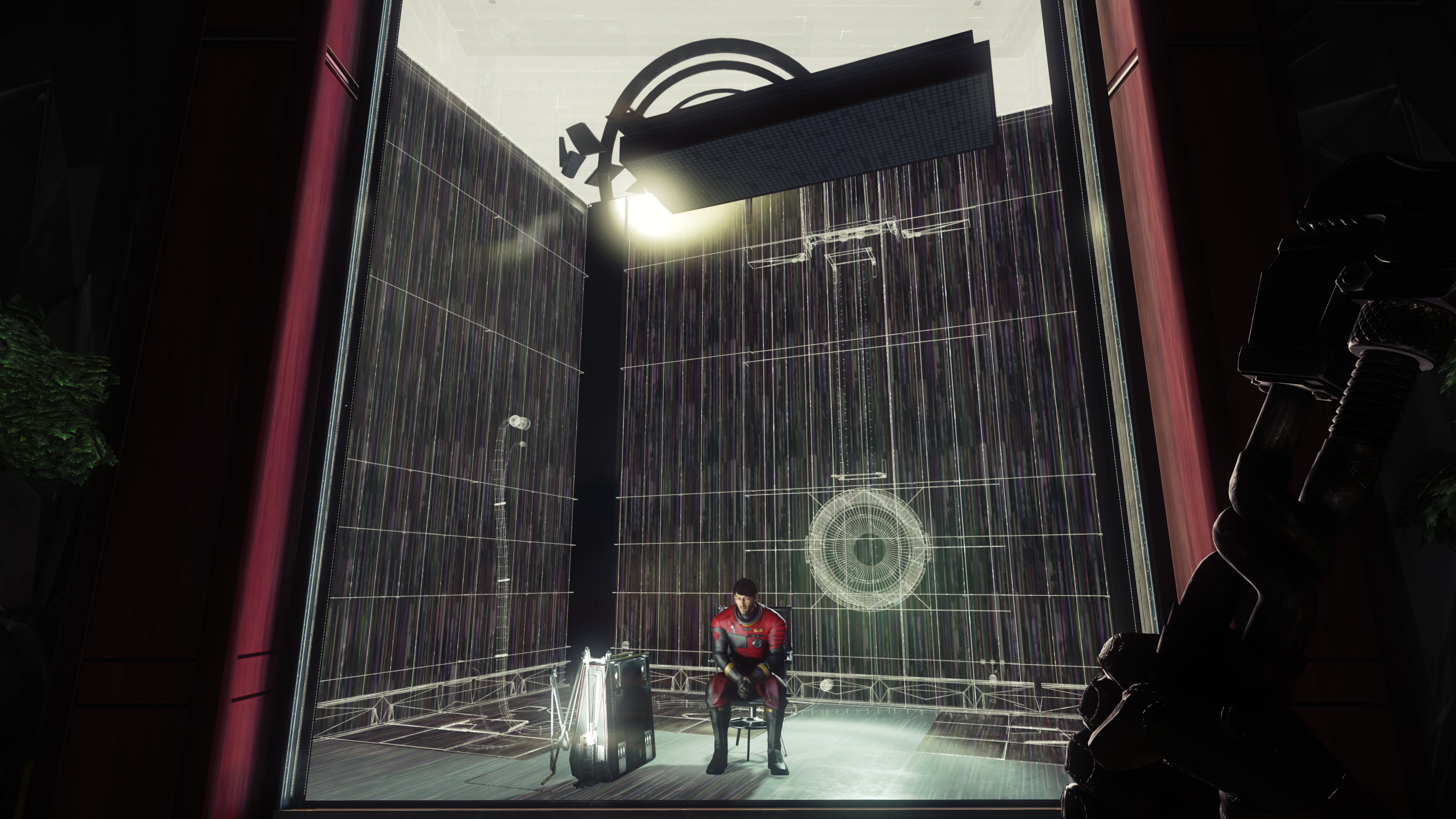
The Looking Glass, pictured above, is an obvious System Shock reference as Looking Glass Studios made the System Shock games.
World building and character development aren’t all that’s found in Prey’s environmental storytelling though (also it’s worth pointing out that loading screens have additional lore). It also has some very good foreshadowing, not the most clever foreshadowing ever but it fits in perfectly. Every time something physically traumatizing occurs to Morgan, like when you first get attacked during the “tests” or when you install the Psychoscope, you see some sort of vision or memory. You see some kind of nervous system spanning your vision, bits and pieces of voices (your own, Alex’s), some telling you that you’re being lied to, or implying that you’re not you. This creates some existential dread. You wonder what kind of terrible secrets you’ll uncover as you keep playing.
More foreshadowing occurs as you read about the development of Neuromods on Talos I. Unsurprisingly the secretive disaster of 1980 was a Typhon containment breach, the original goal of the station in the first place was to study the Typhon after the initial 1958 contact with them, and unsurprisingly Neuromods are born from Typhon research. You’re actually sticking alien material into your head with every Neuromod, and not only that, but Neuromods involve the death of humans in their creation by exposing humans to Typhons. So the rich will happily murder as many “peasants” as they like as long as it gets them Neuromods.
The main goal of Neuromods isn’t for learning skills, that’s just for the public. The main goal is to give humans the abilities of the Typhon, the psionic powers discussed above in the gameplay section. Similar to how Talos I has a secret military weapons division. But the foreshadowing I mentioned? You can find notes fairly early in the game about Talos I Psychotronics researchers contemplating the idea of making sort of reverse-neuromods – giving human abilities to the Typhon, particularly empathy since the Typhons, as intelligent as they are, are incapable of it outright. As soon as I read this in Psychotronics, I predicted that this is what Morgan actually is due to those dream sequences – I predicted that he is a Typhon who has had these reverse-neuromods installed, and the simulation at the start of the game was part of a series of simulations designed to build your life experiences to grow your personality. Many players undoubtedly predicted this, and while it is mostly correct at least it’s not entirely correct.
Neuromods come with a cost too; removing them resets your memory back to the day they were installed. This is kept from the public. This is why Morgan is amnesiac. They were testing neuromods on him. Your brother Alex sabotages your progress throughout the game, and early on you meet an earlier AI copy of yourself called January, whose goal is to assist you in destroying Talos I because of the threat the Typhon present to Earth. Alex won’t allow that.
But the plot continues to grow thicker. You find evidence that Morgan volunteered for these memory-wiping experiments, and after some time it started causing personality shifts, which is the game’s explanation for why you might play this game in different ways. You can kill almost anyone you meet on sight if you wish.
There are plot holes in Prey, in fact I’d say the plot is the weakest part of its writing. Arx Fatalis was a similar bargain; great world building, flawed plot. The first plot hole is when January instructs you to watch a video that you made for yourself. The video is meant to bring you up to speed, straight out of Total Recall especially when you learn that the old Morgan was a ruthless scumbag and corporate shill. Alex is able to interrupt the video and disable your Looking Glass, so the next main quest is to restore your Looking Glass and finish playing the video. Only… January already knows what the video says, so why can’t January just tell you? You’re on the clock here, our entire species is on the line so there’s no time to fix your screen and watch the video just to see yourself telling you what January, which is an earlier clone of you, can already tell you. Time is of the essence, in a situation like this January would just fill you in. And what’s to stop Alex from interrupting it again? Typical Hollywood.
A more minor plot hole occurs after meeting December, another AI clone of a different version of Morgan, whose goal is to help you escape Talos I by stealing Alex’s escape pod. Eventually, January destroys December, but you can pick up a sticky note from the remains that just reads “7911”. Somehow you immediately know that this is the code to Alex’s safe.
The escape pod ending serves as an early cop out ending, since you can obtain it in around half the time it might take you to get one of the “true” endings (speedruns aside). Very RPG-like nonlinear storytelling, I like it. It makes sense. Although what also doesn’t make sense is that the only way to escape the station with survivors is with Commander Dahl’s shuttle, even though Alex’s escape pod can fit a number of survivors. Did Arkane just forget this? There’s no reason you shouldn’t be able to grab survivors and get them up to the escape pod and leave. The survivors equipped for Zero-G travel at least.

Theories like this help make the game’s science and its alien species more thought provoking. Lesser stories miss such details.
Moving on, the Neuromods are used for some additional thematic depth that mostly serves as food for thought; namely the fact that various medical conditions can make some people incompatible with Neuromods, creating concerns among the public of even more significant classism. What happens to people who can’t use Neuromods? Will they just be left behind while the rest of humanity pursues omniscience? You also meet such an incompatible person in the game, a former love interest of Morgan in fact.
There are plenty of opportunities for defining Morgan as you play the game, primarily in how you deal with the few survivors you meet. They can all die, or they can all live. It’s not always directly up to you either; thankfully Prey doesn’t make the common game mistake of making everything revolve around you so blatantly, when in secret the entire plot does revolve around you amusingly enough.
As the plot progresses, it becomes more clear that Alex Yu isn’t the bad guy; Morgan was just as bad as him before, and perhaps you two could achieve more working together. Prey’s twists are never completely unforeseen, but they’re still effective.
The quest design of Prey is interesting. Nothing mind blowing, but it is thankfully as nonlinear as it can possibly be while keeping the story intact. It also has many side quests, some quite rewarding as they can open up new endings even. But Prey does have one main quest that is an absolute stinker though, and it’s not the one to repair your Looking Glass since while this does create a plot hole, the gameplay that stems from it is great. No, the quest to scan the Coral in outer space is an objective marker hunting time waster.
A surprise change of pace occurs in the late game when Commander Dahl lands on Talos I, promising to evacuate any survivors except for the Yu family survivors, Alex and Morgan. But of course, his real mission is to kill everyone and obtain sensitive data. No surprise there, and it’s a lot like Half-Life but not as well executed as that military arrival. It also comes as no surprise by now that your own father ordered everyone on board the station, including you and Alex – their children, to be executed by Dahl.
I previously mentioned the gameplay issues that come with Dahl’s arrival – his infinite spawning operators shows a disappointing lack of enemy variety, but from a writing perspective, seeing these operators – variations of common robots seen throughout the game – absolutely mop the floor with any and all Typhons, is hilariously silly and harms immersion.
Another surprise near the end is when you scan the Coral, talk to Alex about it, and then suddenly the Typhon Apex appears and starts devouring all of Talos I. This consumption of the world around you is reminiscent to what Shodan does at the end of System Shock 2, another cool nod to its spiritual predecessor.
And then there’s the controversial ending. It seems every other game has one these days. At the end of Prey (as long as you didn’t escape via Alex’s escape pod), it is revealed that you are in fact a Typhon that has had reverse-neuromods installed, and the whole game was a simulation to evaluate your behavior. Every critical decision is judged, and depending on what you did, you may or may not be allowed to live. If you are, then Alex will offer to shake your hand. You can shake his hand or kill everyone, and that’s the end of the game. The controversy here is the contrived “It was all a dream” approach, which makes some players feel like everything they did was worthless. It made no difference, the Typhon have already invaded Earth.
Spoilers End Here!
Ultimately, the pros outweigh the cons for Prey’s writing. The plot has issues, the science behind the Neuromods isn’t the most original or clever science fiction ever written, but it is engaging because of the excellent world building. Again, much like Arx Fatalis, Arkane’s first game which also had plot sillyness but excellent world building. It is no surprise that Prey is a game with well written RPG elements and stand out world building, considering that both Raphaël Colantonio and Chris Avellone worked on it. Prey leaves a lasting impression.
Technicalities
Prey uses CryEngine 4. Early in this review I mention the graphics look unfinished without that lighting mod, but aside from that there’s also a pop-in issue, mostly with textures. I also discovered some LOD glitches, with up close objects still keeping the low polygon long distance versions. Glitches I’ve seen in other CryEngine games.
While it’s a very physics enabled game, it also suffers from hilarious CryEngine physics bugs. It’s also weird that this game has so many mirrors and reflective surfaces as well as a first person player mesh, but no player reflections ever.
The game also shows a return of ambient occlusion “bleeding” on objects lying on top of grey/metallic surfaces. Speaking of surfaces, the biggest visual issue with the game is that every surface is glossy, which exposes hideous screen space reflections and/or cubemaps. But the art design is superb. The pop-in isn’t severe, the LOD glitches are rare.
Those without OLED screens will suffer greatly from black depth limitations in outer space, but on an OLED screen the atmosphere is particularly amazing. OLED users should try HDR Retrofit to force on HDR. The worst looking thing in this game is the vegetation up close.
It’s one of the lightest CryEngine games to run though. It didn’t even require flagship hardware from the time to max it out at 2560 x 1440 and average 80 or more FPS. This is because of its heavy use of static lighting. An RTX 2080 Ti paired with a Ryzen 9 3900X averages over 100 FPS at 4k on max settings, though if you want to never drop below 120 FPS at 4k, you need an RX 6800 / RTX 3080 or greater.
Things are worse when it comes to sound. It’s problematic on both stereo and surround sound systems. The surround spatialization is surprisingly awful, some of the worst I’ve heard. It’s broken and sounds often come out of the wrong speakers. There’s also zero simulation of height or vertical sound, everything sounds flat plane. Distance is poorly simulated too. It’s appalling and so disappointing as sound is more important in this genre than most. Sound quality was a huge strength for Arx Fatalis, System Shock 2, the classic Thief games, and Deus Ex. I’ve never seen such botched surround spatialization before.
It’s funny because the sound effects quality is mostly very good. There’s a lot of variety in material sound effects, different surfaces making the right sound. And small object collisions produce more realistic sounds than most games, although not quite as impressive as Cryostasis: Sleep of Reason here much less SOMA.
There are some mixing issues too, namely voices from in-game characters being exponentially louder than audio log/TranScribe voices.
There’s one really good thing about sound though: the soundtrack. Let me see who is credited for that… oh, Mick Gordon. No wonder. Prey’s soundtrack is masterful at building up suspense, tension, and adrenaline most commonly. For an outer space survival horror game, the soundtrack absolutely nails it.
| 64-bit | Yes |
|---|---|
| Linux Support | No |
| Graphics API | DirectX 11 |
| Frame Rate | Unlocked |
| High Resolution Support | Yes |
| Ultrawide Support | Yes |
| High Refresh Rate Support | Yes |
| Borderless Windowed Support | Yes |
| VR | No |
| Display HDR | No (force with Special K) |
| Shader Compilation Stutter | Minimal |
| Ray Tracing | No |
| Mesh Shader Virtual Geometry Pipeline | No |
| NVIDIA Micro-Meshes | No |
| Advanced Distance-Based Level Streaming System with No Loading Screens | No |
| Variable Rate Shading | No |
| Sampler Feedback Tiled Texture Streaming | No |
| Sampler Feedback Texture-Space Shading | No |
| DirectStorage/RTXIO | No |
| Multicore CPU Support | 4-8 cores |
| GPU Physics | No |
| Adjustable FOV | Yes |
| Anisotropic Filtering | 16x |
| Anti-Aliasing and Upscaling | SMAA Fullscreen Supersampling |
| Sound API | WWise |
| Sound | Up to 7 channels |
| Dolby Atmos | No |
| UI Scaling | Yes |
| “Analog” Keyboard Support | Flawed |
| Debug Console | No |
| Modding | Very Limited |
Conclusion
Although deceptively named, Prey is Arkane’s best title since their very first, Arx Fatalis. The two games share the same DNA, being spiritual successors to Looking Glass Studios titles (System Shock series for Prey, Ultima Underworld series for Arx Fatalis) with many references to them. They also share some of the same flaws. Prey aims to be a bigger game than the System Shocks, and it is, although bigger doesn’t mean better. But unlike the ultra shallow BioShock games, Prey is a worthy successor to the System Shock franchise.
I’ve loved space horror since Alien, when done right of course. Prey has a collection of flaws, certainly a more flawed game than System Shock 2, but the pros outweigh the cons. Compared to the System Shocks, Prey is the bigger, more story and exploration focused game (although it has more writing flaws at the same time), and better allows for stealth gameplay, but it is a much weaker survival horror and FPS game. Nevertheless, it is somewhat of a return to form for Arkane Studios, offering a lot more than the Dishonored games. If only they spent more time making spirutual successors to Looking Glass Studios games, since the two times they tried (Prey and Arx) resulted in their best games by far.
Prey should appeal to Sci-Fi fans, horror fans, stealth game fans, and of course the “Immersive Sim” crowd that rejoiced over it. But one cannot ignore the gameplay weaknesses: shockingly low weapon variety which sees you unlock all weapons by the 1/3 point of the game, low enemy diversity, contradictory enemy design (shadowy fast aliens that make no attempt to hide in shadows and are as loud as giant machines), overly exploitable AI that can’t properly defend or attack in the game’s large environments, excessive amount of Neuromods making the player a master of all trades by the end of the game.
It’s too bad it wasn’t a commercial success. Some blame Bethesda’s decision to withhold review copies until the release of the game, delaying reviews and thus delaying some sales that were dependent on critical reception (because we all know how great game journalists are!), but that wasn’t the main factor. Ultimately, Prey is just too rich of a game for most people, despite having all the utmost noob-friendly features enabled by default. Its richness, its detail and its content are its strengths, but they’re intimidating to most gamers. “Immersive Sims” like this are almost always cult hits at best and rarely commercial successes. But to that crowd, Prey’s gameplay weakness hampers it, though they do view the game positively in general.
Looking Glass Studios, one of the absolute most talented game studios of all time, perished after releasing Thief: The Dark Project, System Shock 2, and Thief II: The Metal Age back to back – three of gaming’s finest achievements. Arx Fatalis wasn’t a success. I don’t expect the upcoming System Shock remake to be a commercial success either. In this industry, crap sells and art usually doesn’t. So who knows how long it’ll be before we see another game like this, after the release of the System Shock remake.
I also don’t understand Prey: Typhon Hunter. Really? Prey and VR obviously go together like milk and cereal, instead of making Typhon Hunter they should have at least considered making a VR remaster of Prey. And then do a VR remaster of Arx Fatalis using Arx Libertatis while you’re at it. These games almost need to be VR.
If you like this game and never played the System Shock games, be sure to give those a go.
Strengths
- Prey presents one of the most detailed, believable game settings ever made. No location feels more lived in. The world building is very strong here, and the character development is surprisingly good.
- Wonderful nonlinear design. Virtually infinite backtracking, nonlinear quest and level progression, multiple endings including a very early one, ability to travel either on foot through the ship or through outer space or through the G.U.T.S. is cool, all of this allows for greater freedom of expression from the player.
- Extremely interactive environment used to bolster both the narrative and nonlinear gameplay.
- The Typhon is an intriguing alien species, and they make for intimidating, although still cheesable, opponents.
- The storytelling effectively screws with the player’s mind at times, even though none of the twists are entirely unforeseen. Cool foreshadowing too.
- Pretty good, but flawed character build diversity. Repair, Hacking, Leverage (strength leading to new physics interactions) are all used occasionally for progression, cool weapon design although too few of them, very cool psionic powers of varying types (polymorphing, psychokinesis, pyrokinesis, summoning, and more).
- Very capable, but overpowered stealth gameplay.
- Inherits much of Dishonored’s movement. Ledge mantling (although a flawed implementation), automatically ducking under low objects (also flawed), and thankfully leaning.
- Above average AI actually poses a challenge for some time, even if they’re still exploitable.
- Perfectly designed outer space movement.
- Outstanding soundtrack.
- Good difficulty mode customization with the inclusion of optional survival gameplay parameters for weapon degradation, traumas, and limited oxygen (only if your suit is damaged though).
- Its crafting system didn’t make me want to kill myself.
Weaknesses
- Some plot holes – realistically, January would have just filled us in on the rest of Morgan’s video (if he didn’t know the contents then he should have stated as much), instead of wasting all the time to go fix it when our entire species is on the line here. Also you cannot escape with survivors via Alex’s escape pod for some reason, only you can use it alone.
- A bit buggy and unpolished. Physics glitches, AI path finding issues are common, other AI bugs, LOD glitches, I did encounter a game breaking bug that required restarting it (all computer screens ceased being interactive). Also some wonky coding behind some quests, like how when you transfer the data about Mikhaila’s father to your workstation, it simply doesn’t appear on your workstation until you talk to her.
- Surprising clunkiness with movement mechanics not working reliably. Hard to believe this from Arkane, creators of the Dishonored games which are some of the most impressively fluid games ever. Picking up large objects and moving them or throwing them almost never works, which is a shame because this is meant to be a legitimate weapon choice with the Leverage ability. Automatically ducking under objects doesn’t always work, mantling is unreliable and automatic which reduces how much control you have over your character compared to System Shock 2/Thief’s implementation. You lose control over your character a bit too often for a game like this; likewise you have no control when exiting elevators so your character might walk right into danger.
- AI is too exploitable, much more than in System Shock 2 (and because System Shock 2 is properly moddable, it has a mod that makes them even less exploitable). Phantoms are confused when you run circles around them, when you take cover, and all enemies are helpless beyond a certain distance (20m or so for many) and such distances are very commonly seen in Prey’s big maps. Every single AI is incapable of dealing with a player that maxes out Mobility (which is quick to max out); you can sprint and jump with impunity and probably never get touched, no matter what you’re up against.
- The Nightmare enemy should have its own difficulty customization option – it is a shame that it only ever works on a limited timer, with the game blatantly telling you how long until it will despawn. This should be a difficulty option enabled by default on easy and perhaps normal mode. I want the Nightmare to be a REAL threat. Though it still struggles to hit a player with maxed out Mobility.
- The enemies are shadowy-looking aliens, yet they are as loud as giant machines and make no attempts to hide (except for Mimics hiding in plane sight). Instead, they should vehemently and almost exclusively stick to the dark, destroy light sources (so the game should be far less lit than it is), and be silent beyond 1 meter. At least on Nightmare difficulty mode.
- Summarizing the above two points – every Typhon aside from the Mimics needs a complete gameplay redesign.
- Various balance issues, so many overpowered abilities. Stealth is overpowered such that leveling it up is pointless. Maxed out Mobility is overpowered, Mindjack is overpowered, Backlash is incredibly overpowered, some suit and scope chipsets are outrageously overpowered, the side quest that results in water fountains restoring psi points is ridiculously overpowered. While the game initially appears to be an above average survival horror game, it is largely smoke and mirrors and it ends up being a power fantasy game long before the end even (Prey Core Balance Mod thankfully delays this but it’s not enough) and this is even true on Nightmare mode. Typhons are no match for a Neuromodded Morgan Yu, or even military operators. And once you discover the overpowered elements: stealth as mentioned above, maxed out Mobility, the Morph ability, and more, and once you find out the AI exploitability, all semblance of challenge is lost, again even on the hardest difficulty mode and even early game.
- Too many Neuromods, even if you never fabricate them. Your character ends up being a master of so many trades.
- Seeing the Typhon, the ultimate threat to humanity, get absolutely bodybagged by military operators is silly.
- The Typhon look like moving shadows yet none stick to the darkness. The game really should have involved lighting more in the gameplay process, and made at least Phantoms (all variants) utilize shadows more.
- Not nearly moddable enough.
- The main quest to scan the Coral is the worst kind of objective marker hunting quest. Total bore but thankfully it’s the only bad main quest and you’re already an overpowered God by then so you can finish it very quickly.
- Outer space is too noisy, it misses out a bit on what space horror should be.
- Inadequate enemy variety, especially when Commander Dahl lands and unleashes… infinite spawning military operators and nothing else. Substantially less enemy variety than the System Shocks even though this is at least twice as long of a game.
- Inadequate weapon variety for a game of this length, also substantially less than the System Shocks. Even if Prey were half the length it’d need more, even with the psionic powers. You unlock all weapons by the time you’re around 1/4 through the game, so you must finish the last 3/4 with the same arsenal.
- The worst surround spatialization I’ve ever heard, which harms immersion. Sound is ultra important for this type of game. It often uses the wrong speakers, no sense of height/verticality, poor sense of distance. It also has some sound mixing issues with character voices being exponentially louder than audio log voices.
- Some minor flaws with mouse/keyboard support. You can’t drag and drop items around your inventory, if you want to move items then for some reason you must hit Enter and then move it with the arrow keys before hitting Enter again. Numeric key pads also don’t support number row keys, though they do support numpad.
- Lots of lights not casting shadows and noticeable pop-in. Thankfully a mod addresses both, though pop-in can still be seen.
- While it offers fairly extensive HUD/UI/tooltip customization, it’s not enough. Thankfully Prey Interface Customizer has us covered.



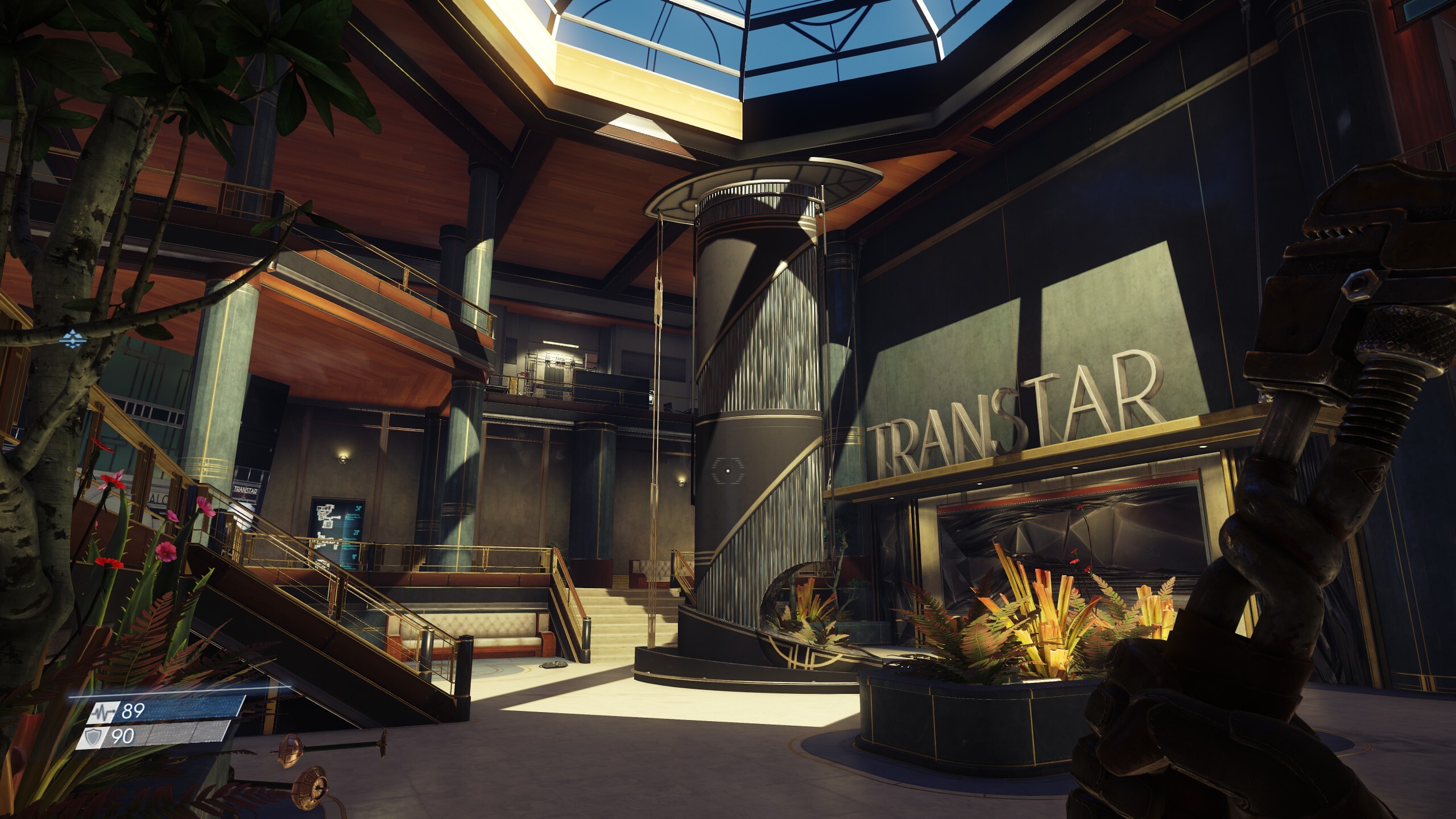
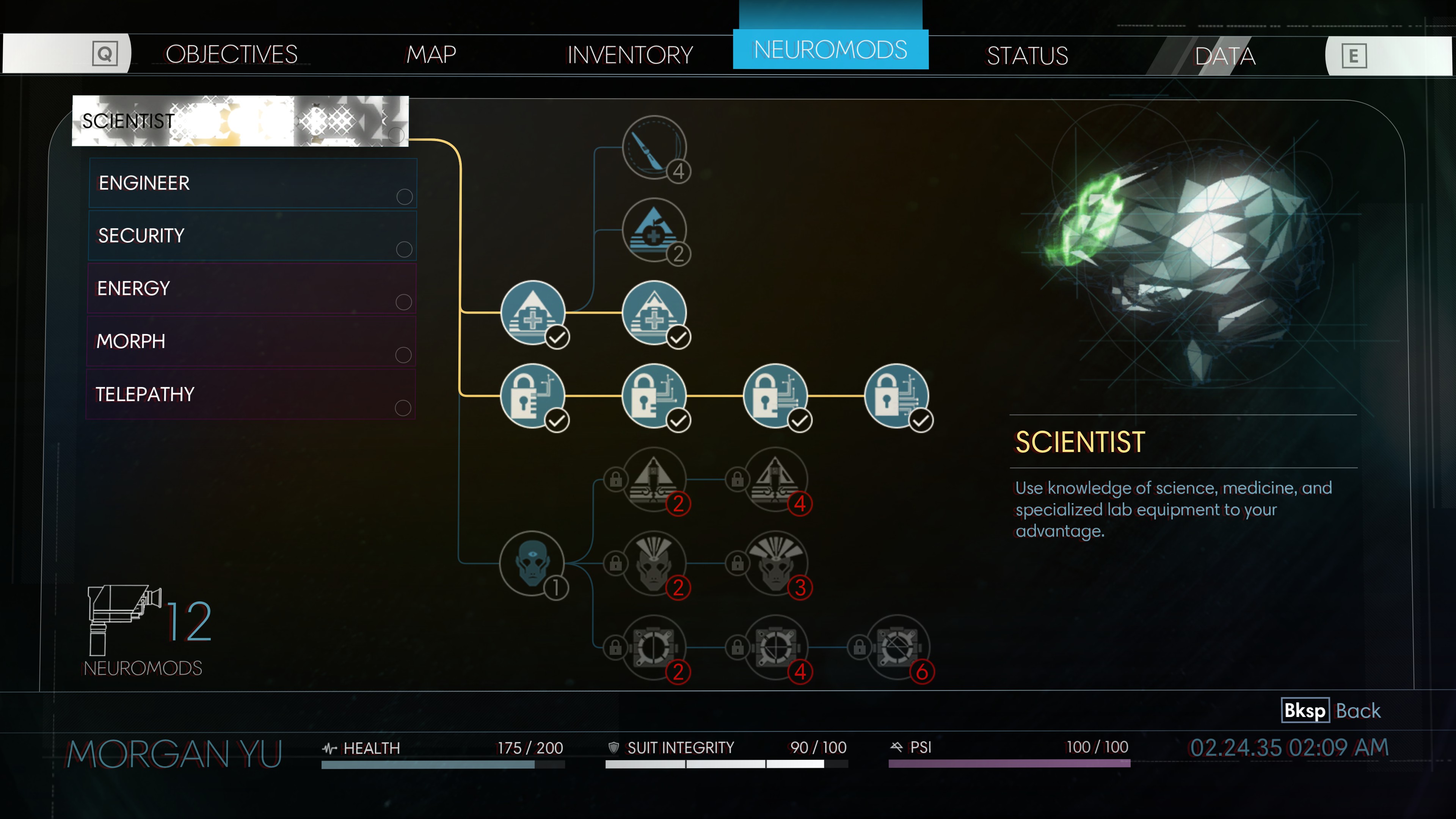

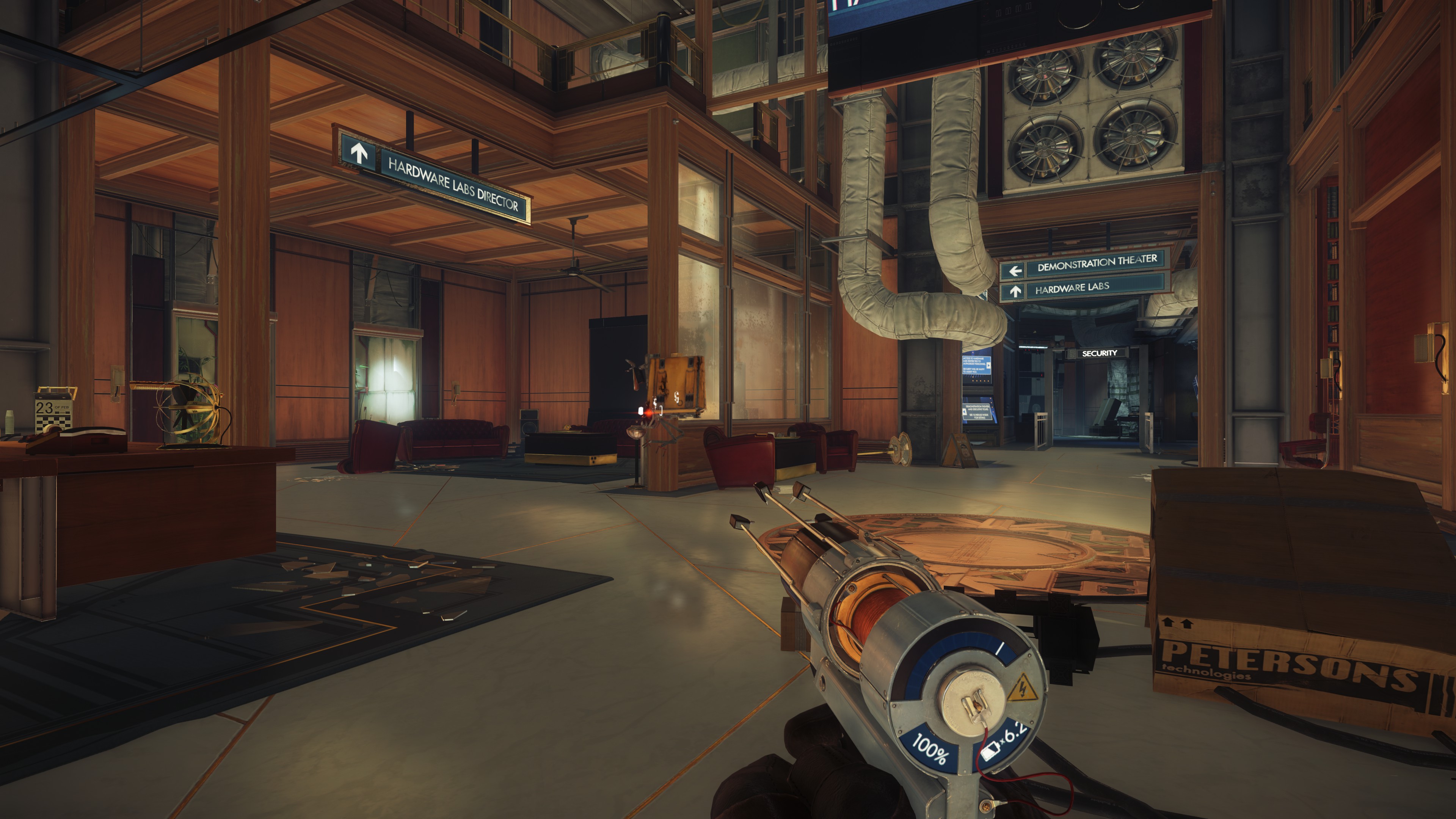
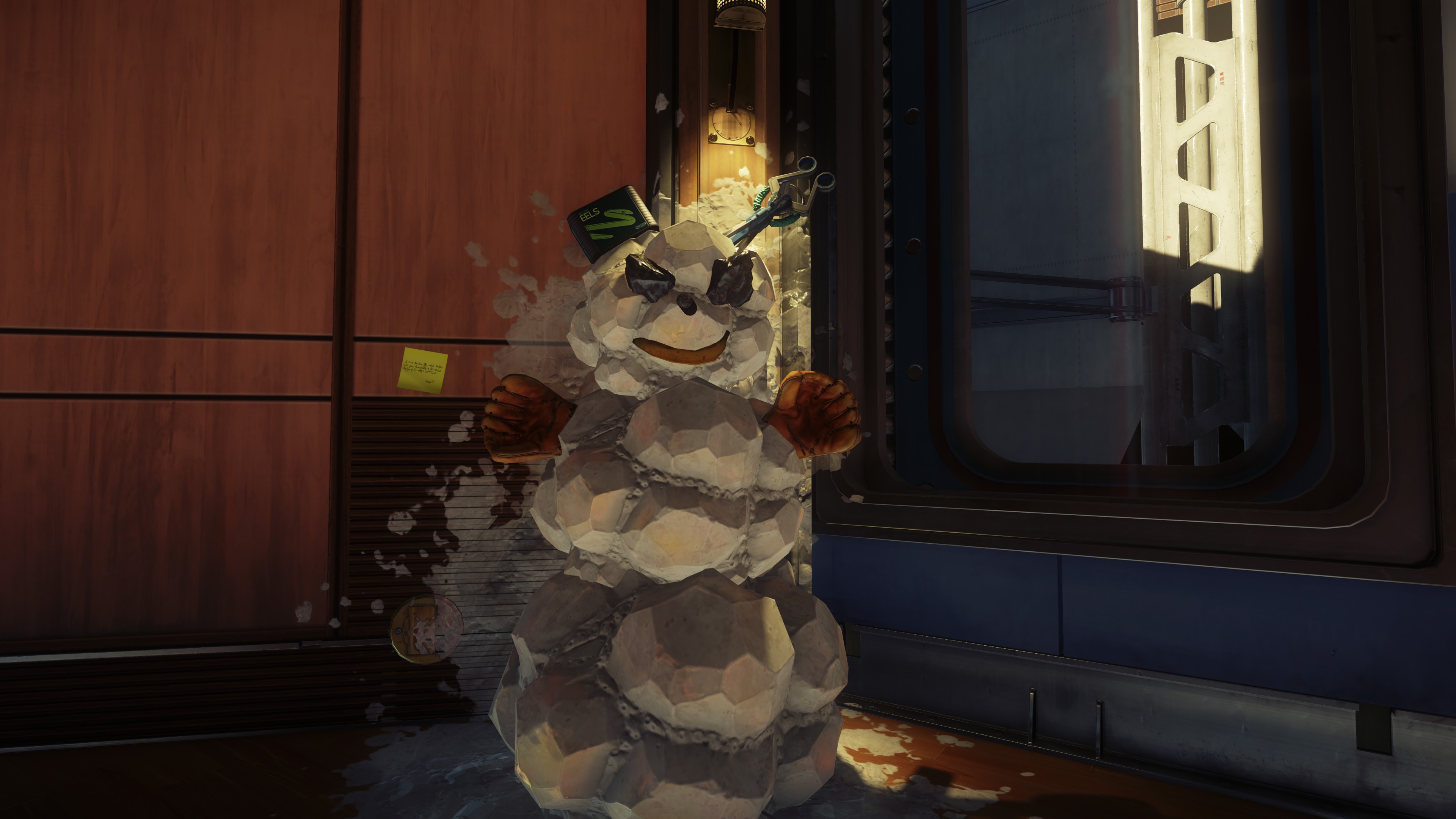
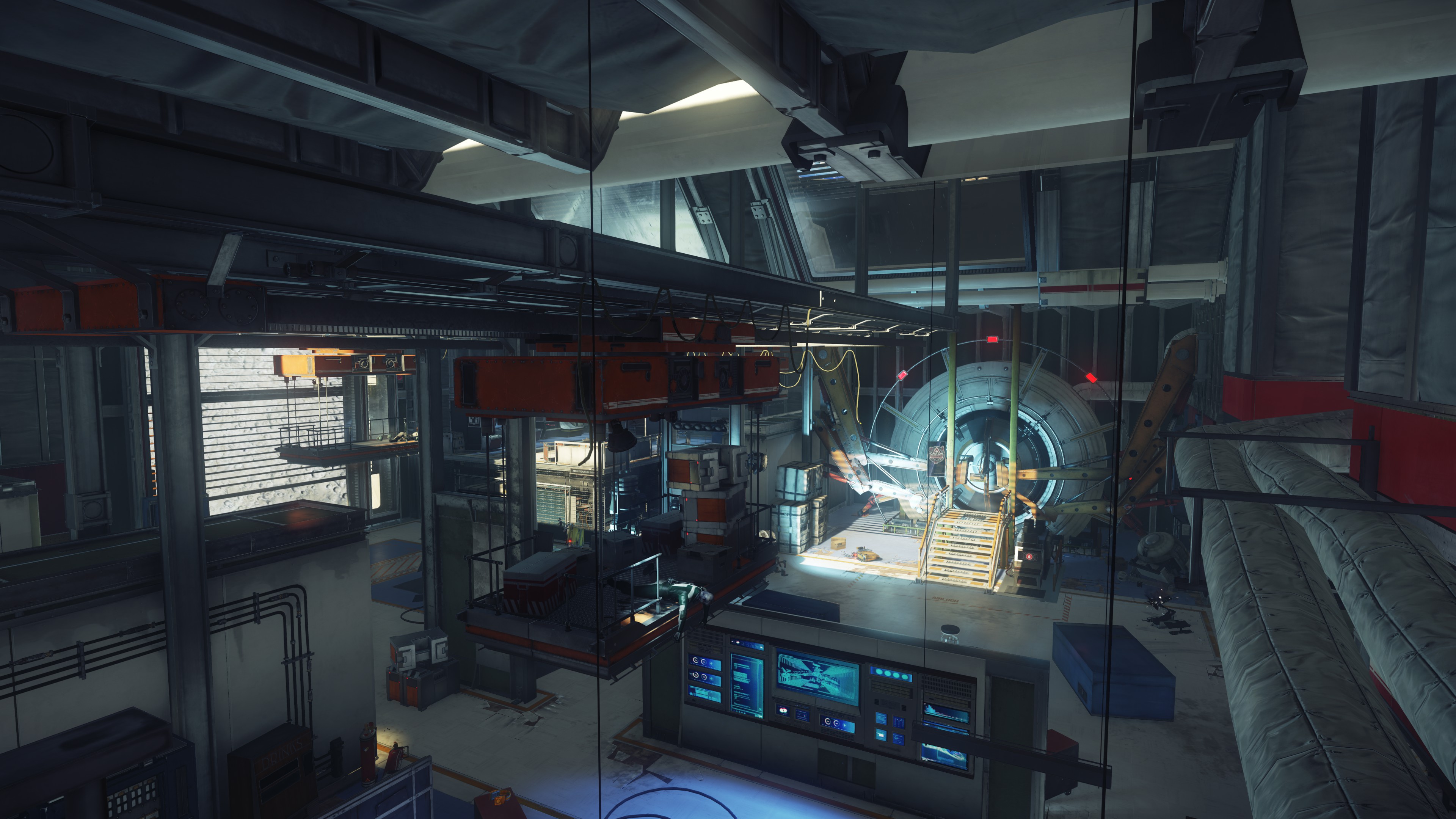





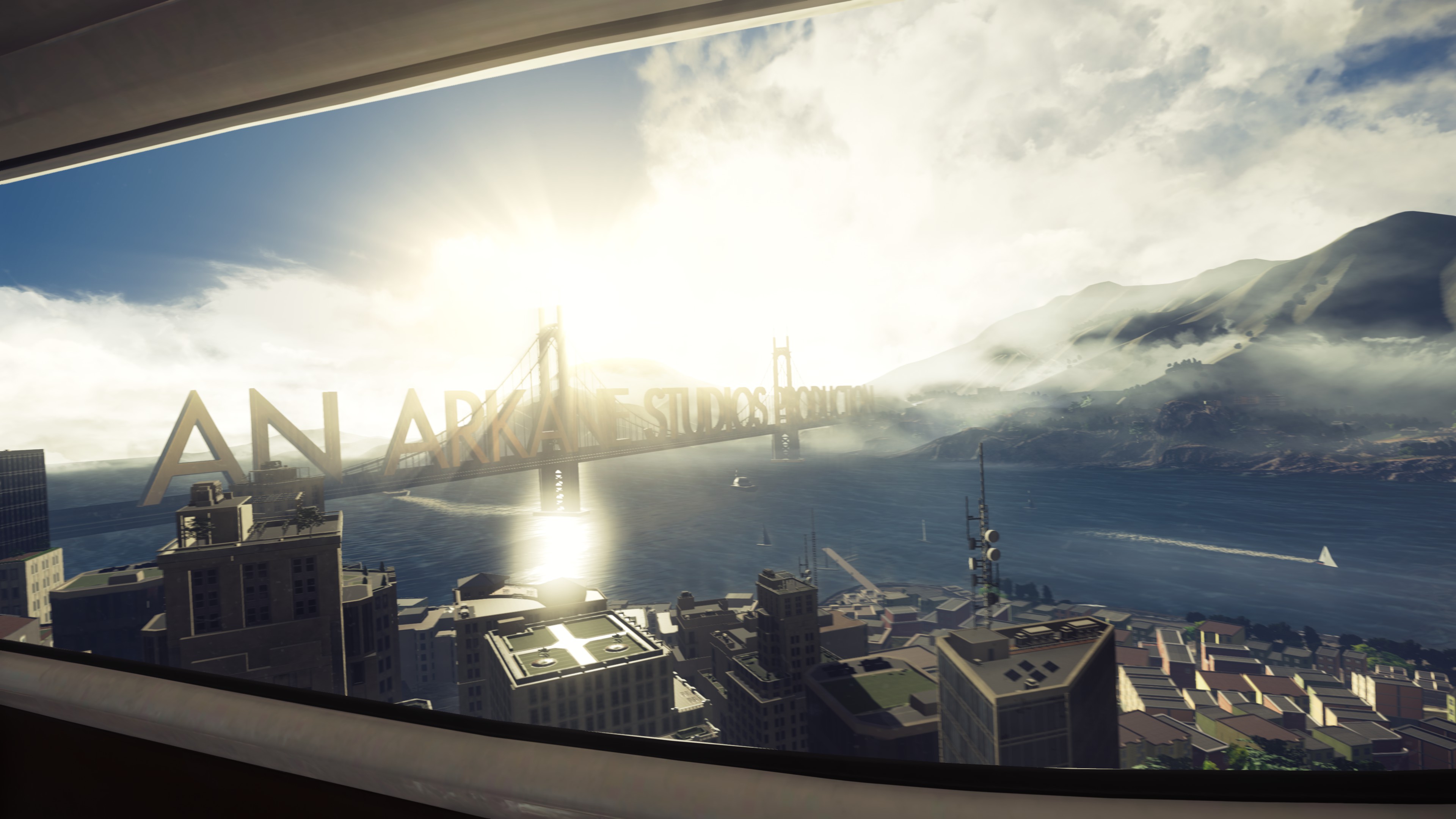
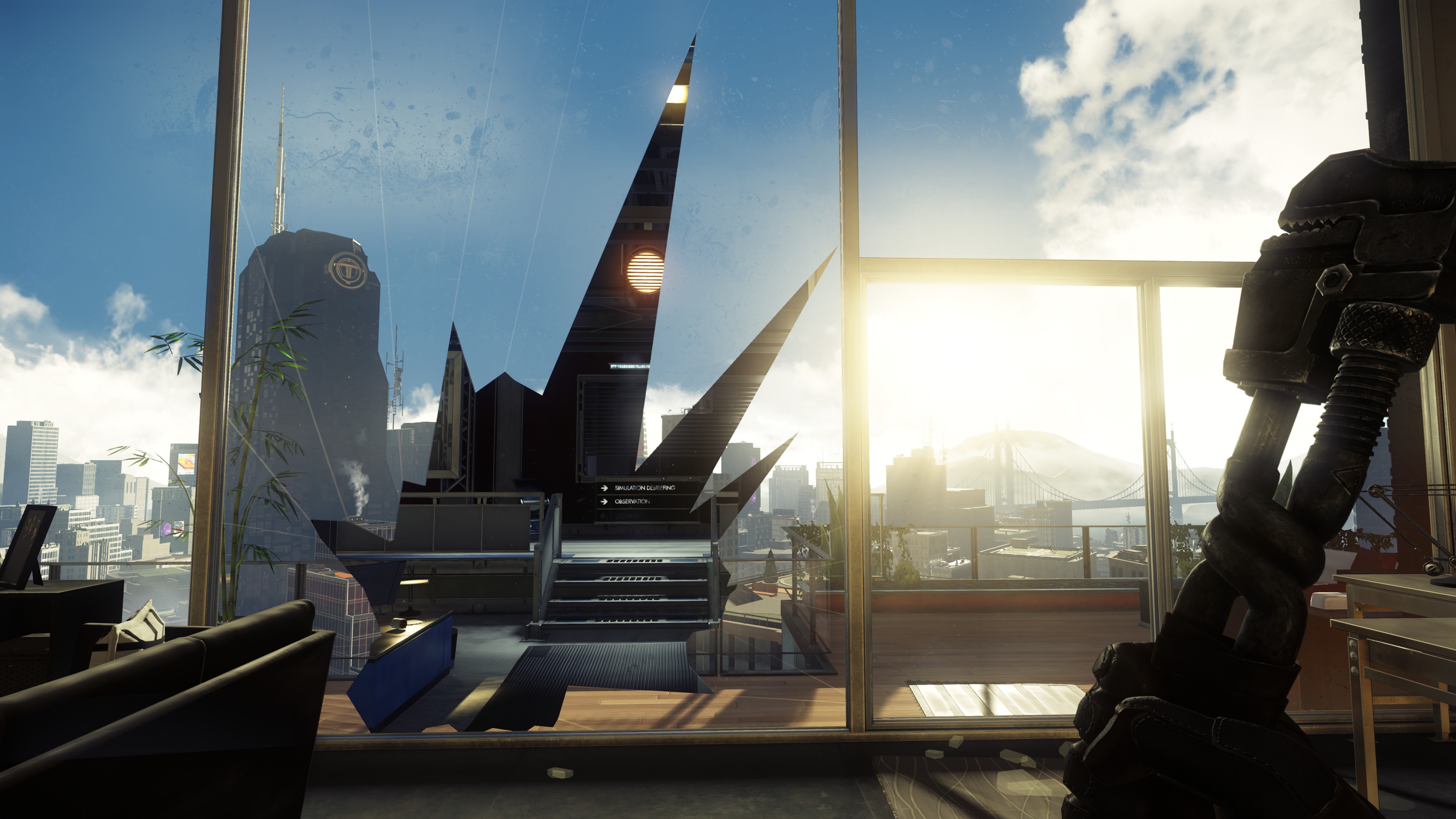
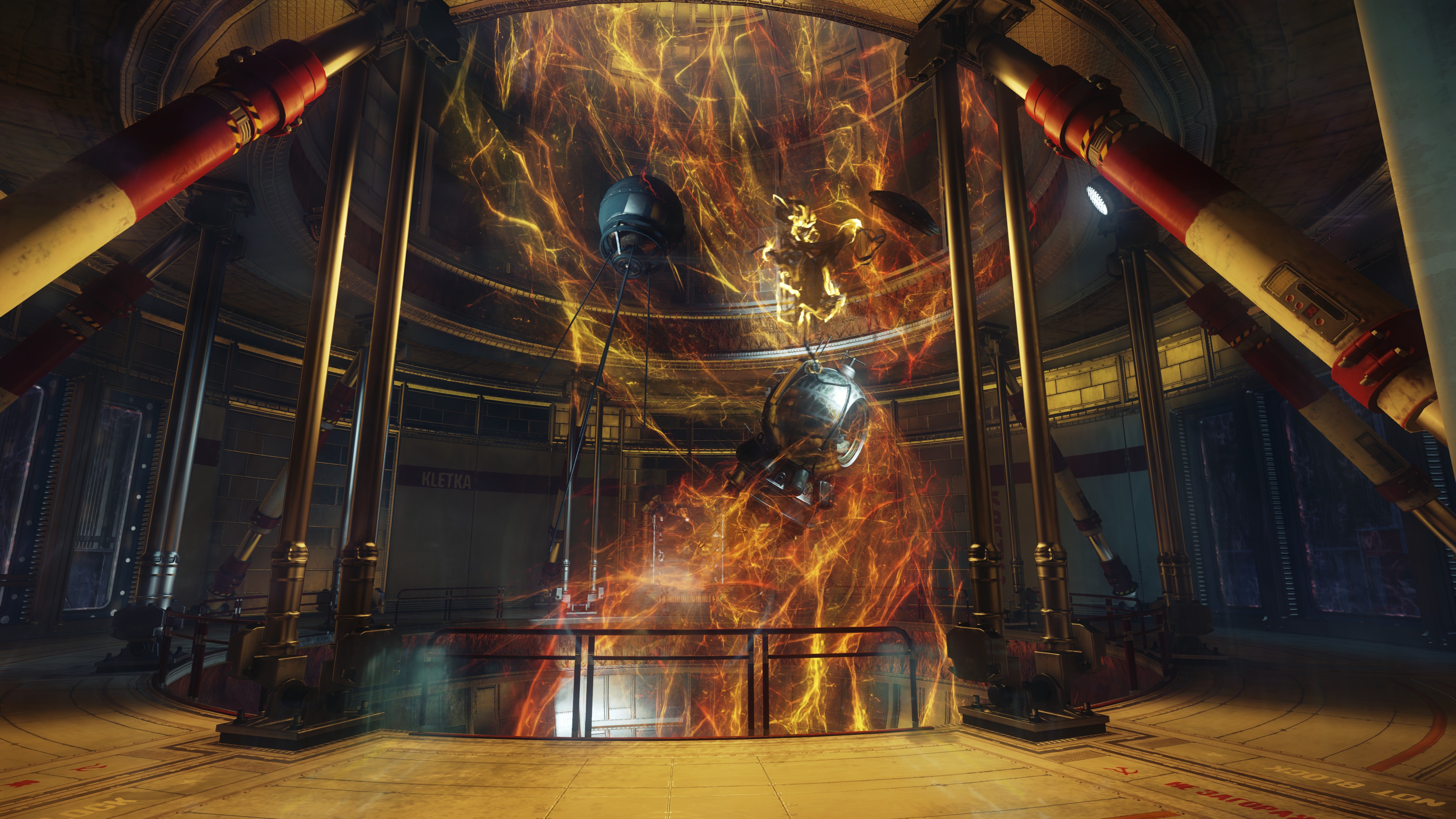
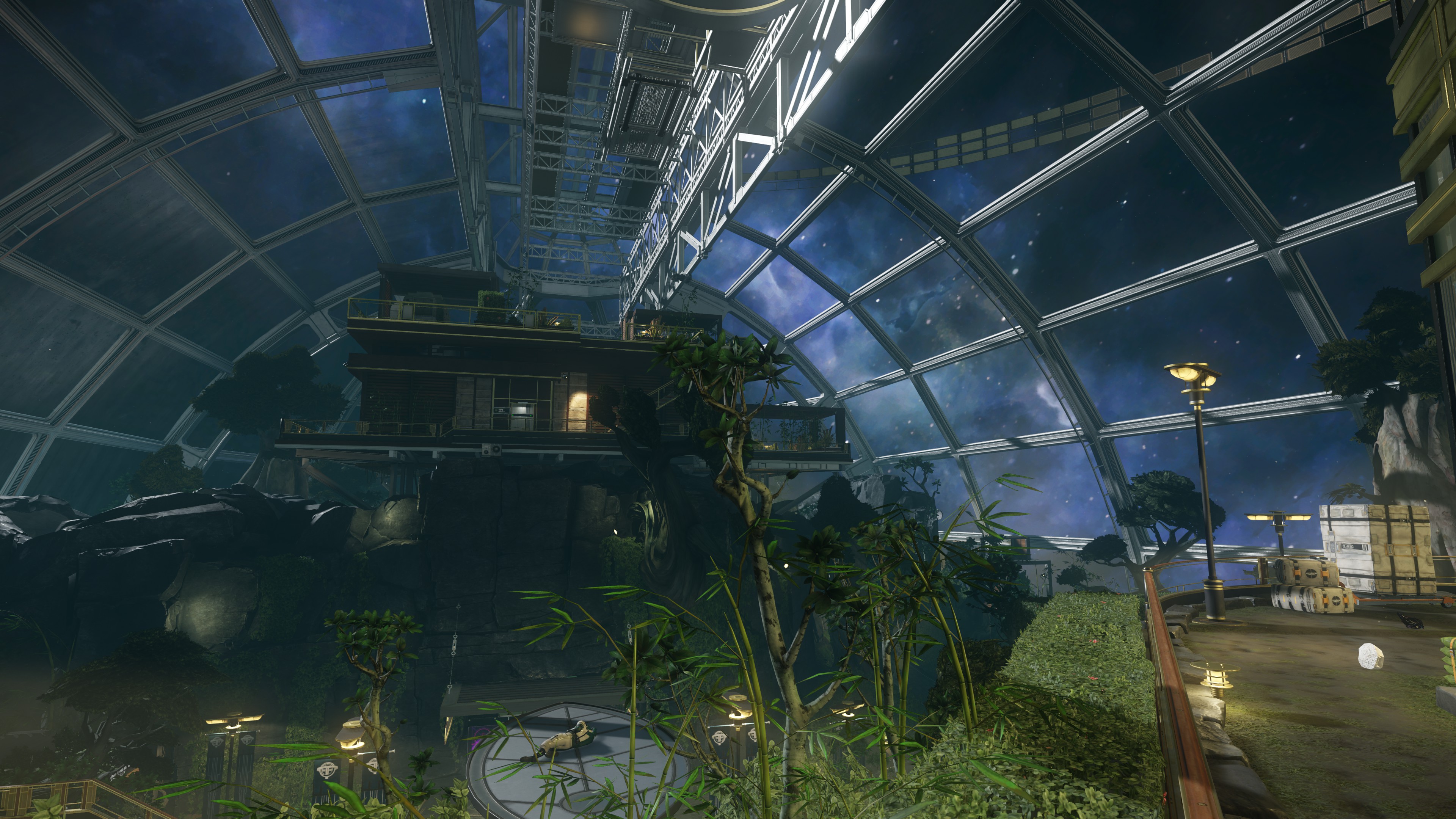
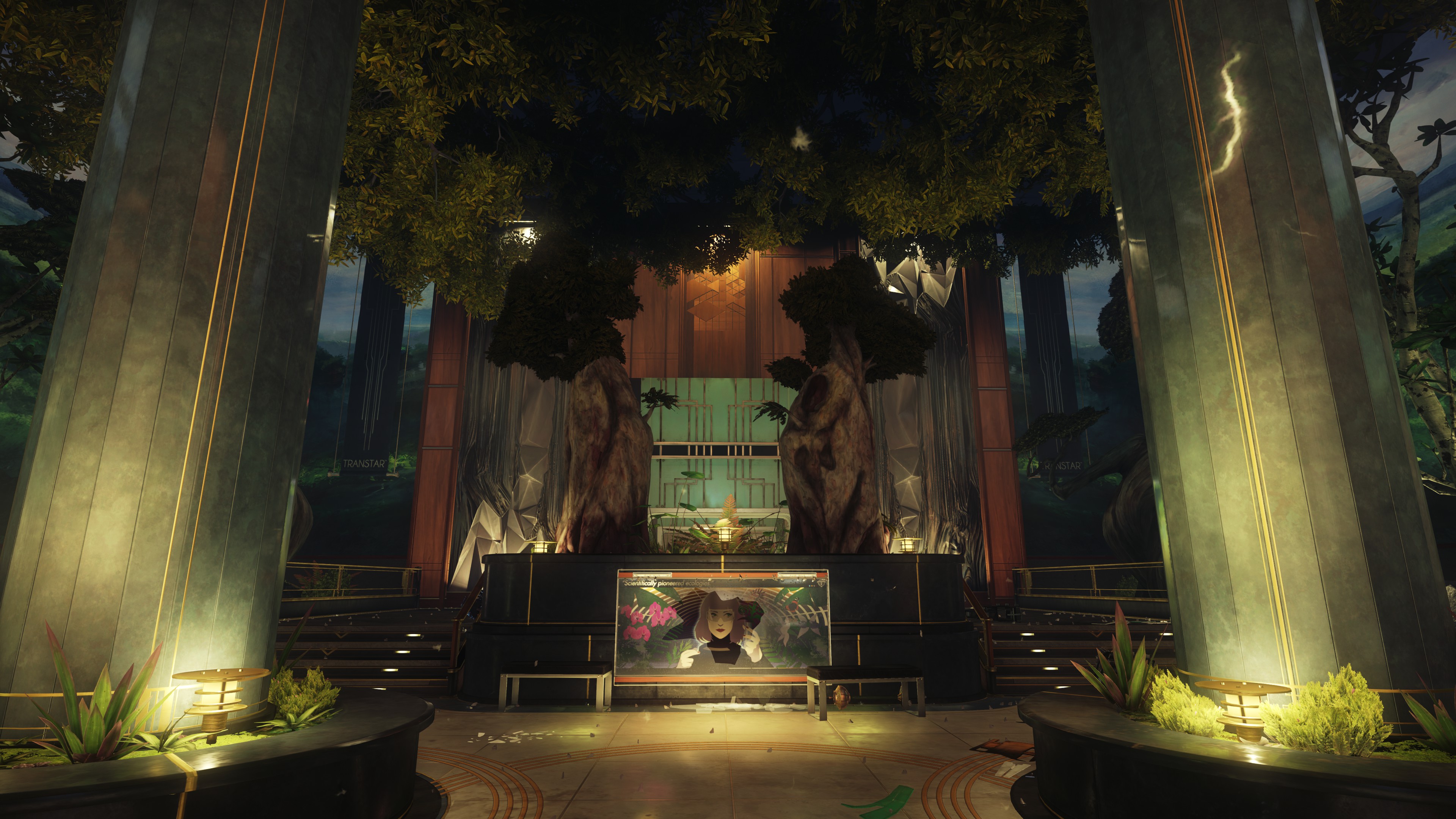
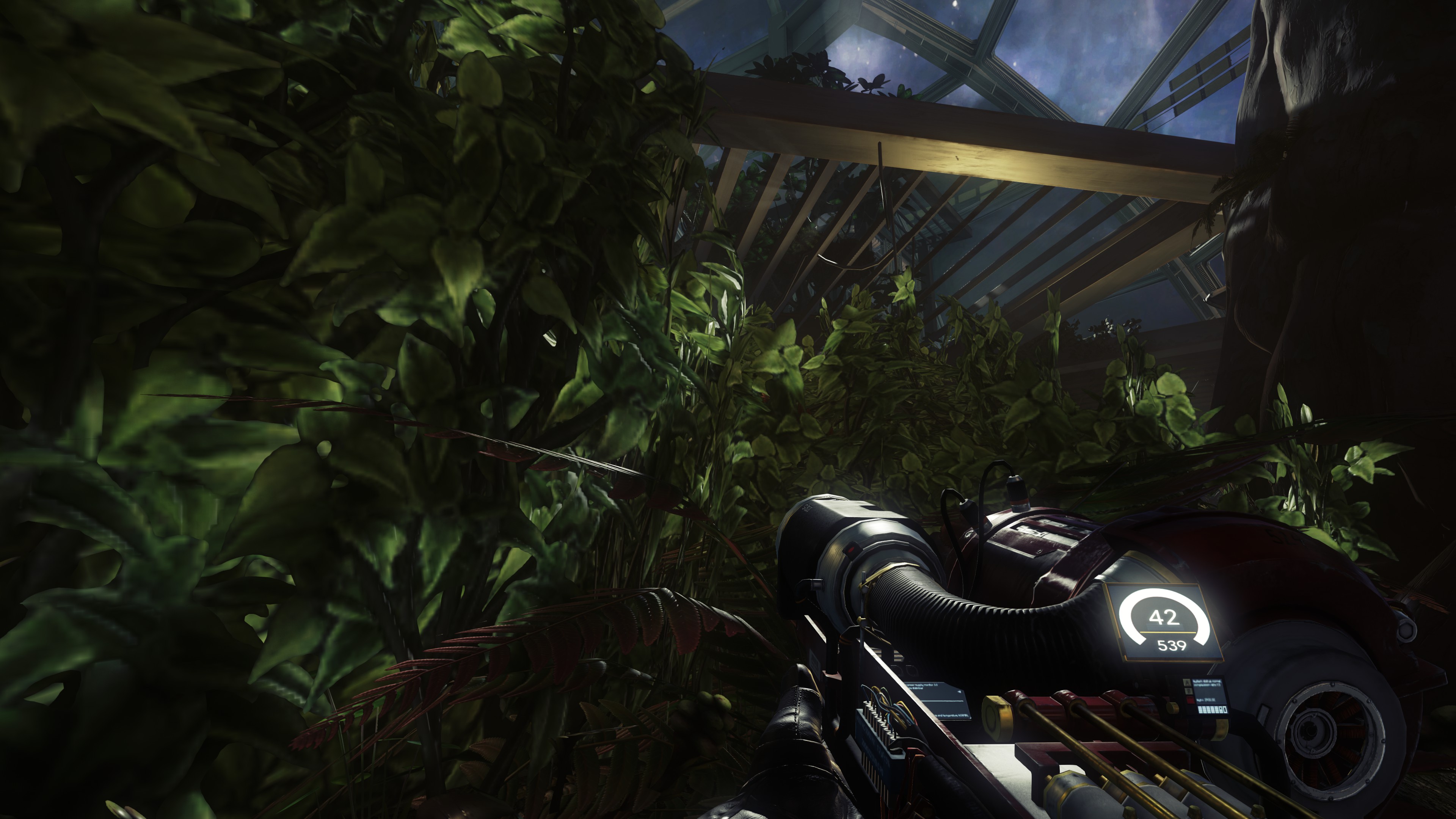
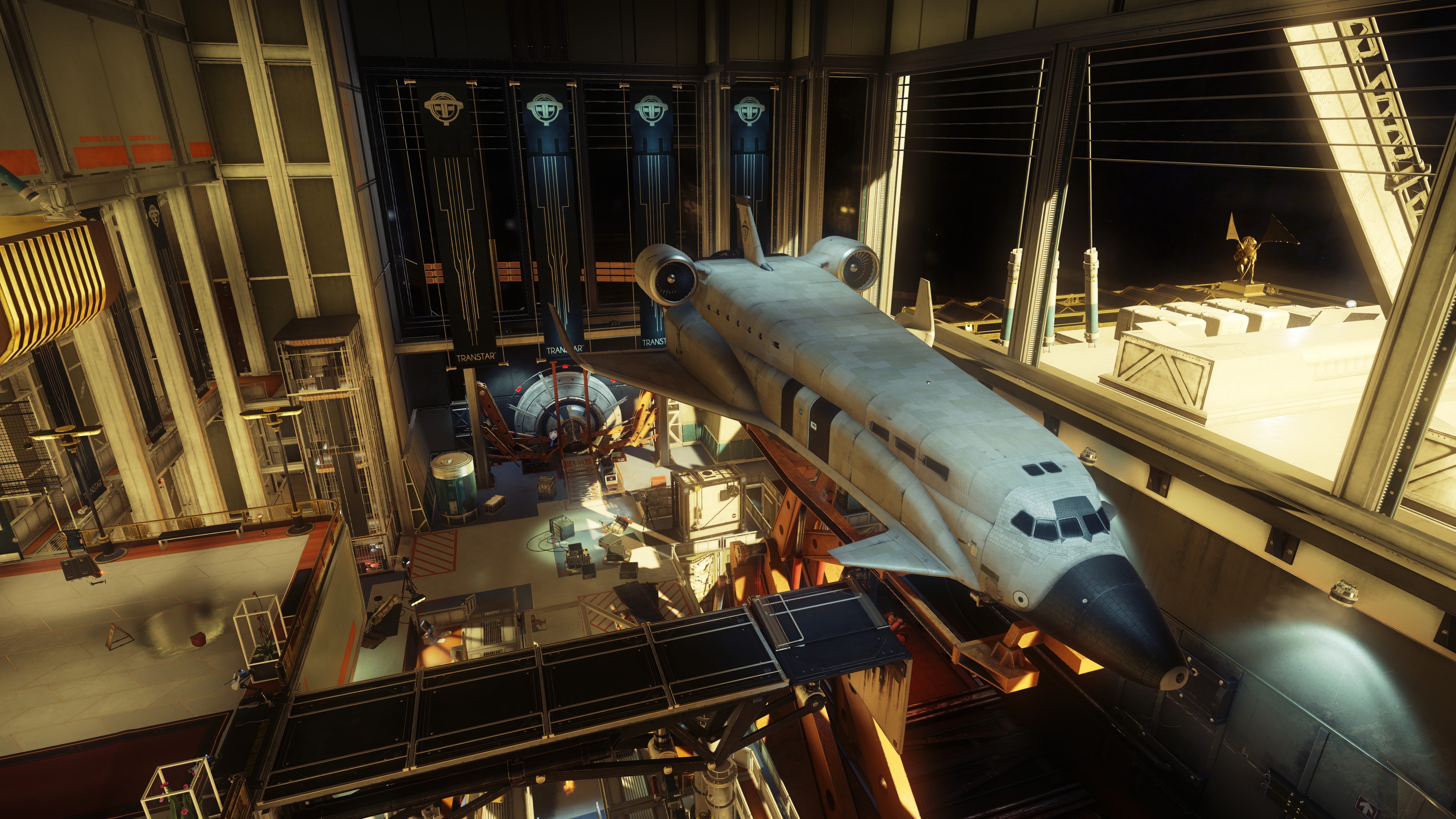
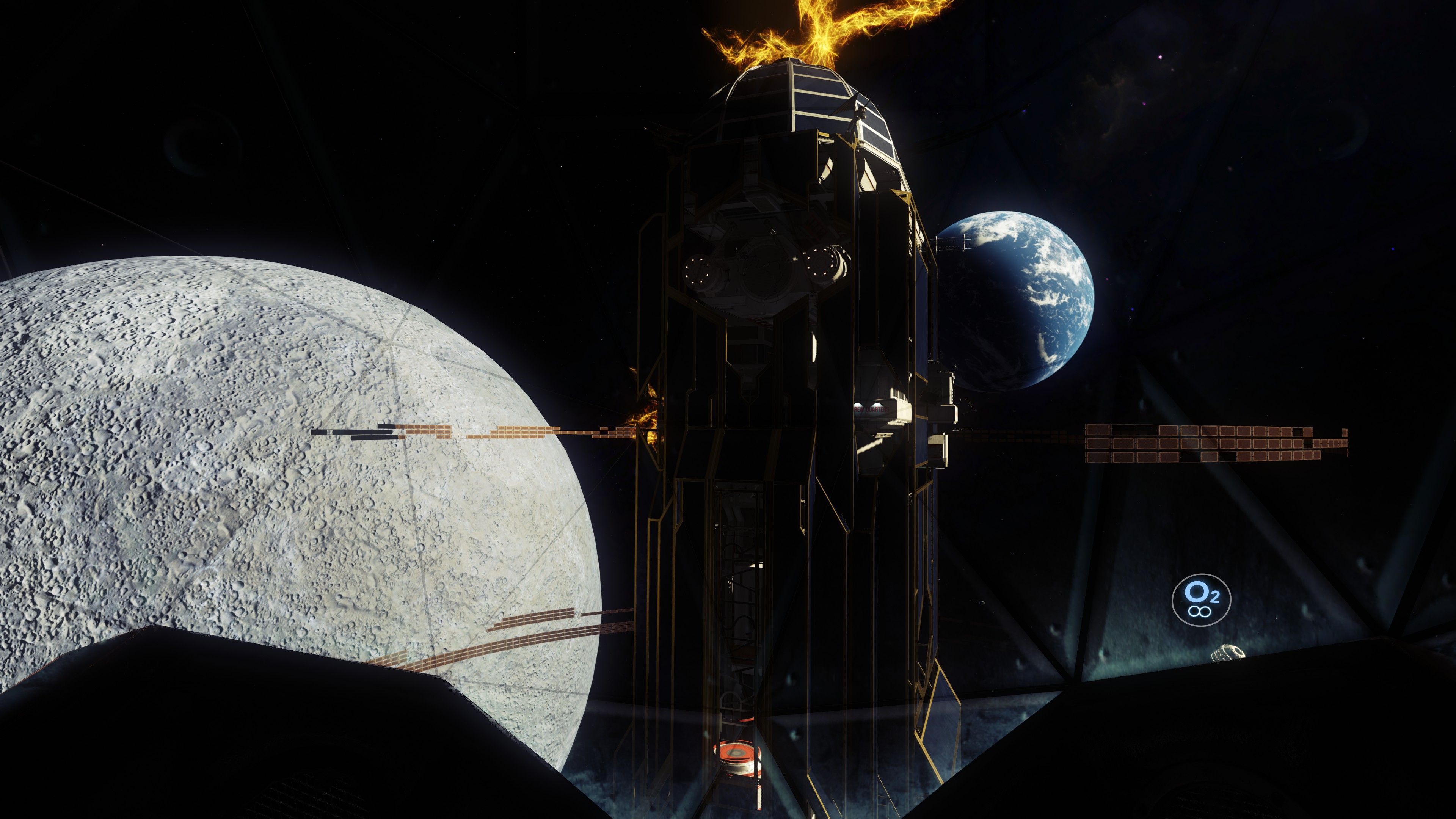


 (9 votes, average: 3.89 out of 5)
(9 votes, average: 3.89 out of 5)